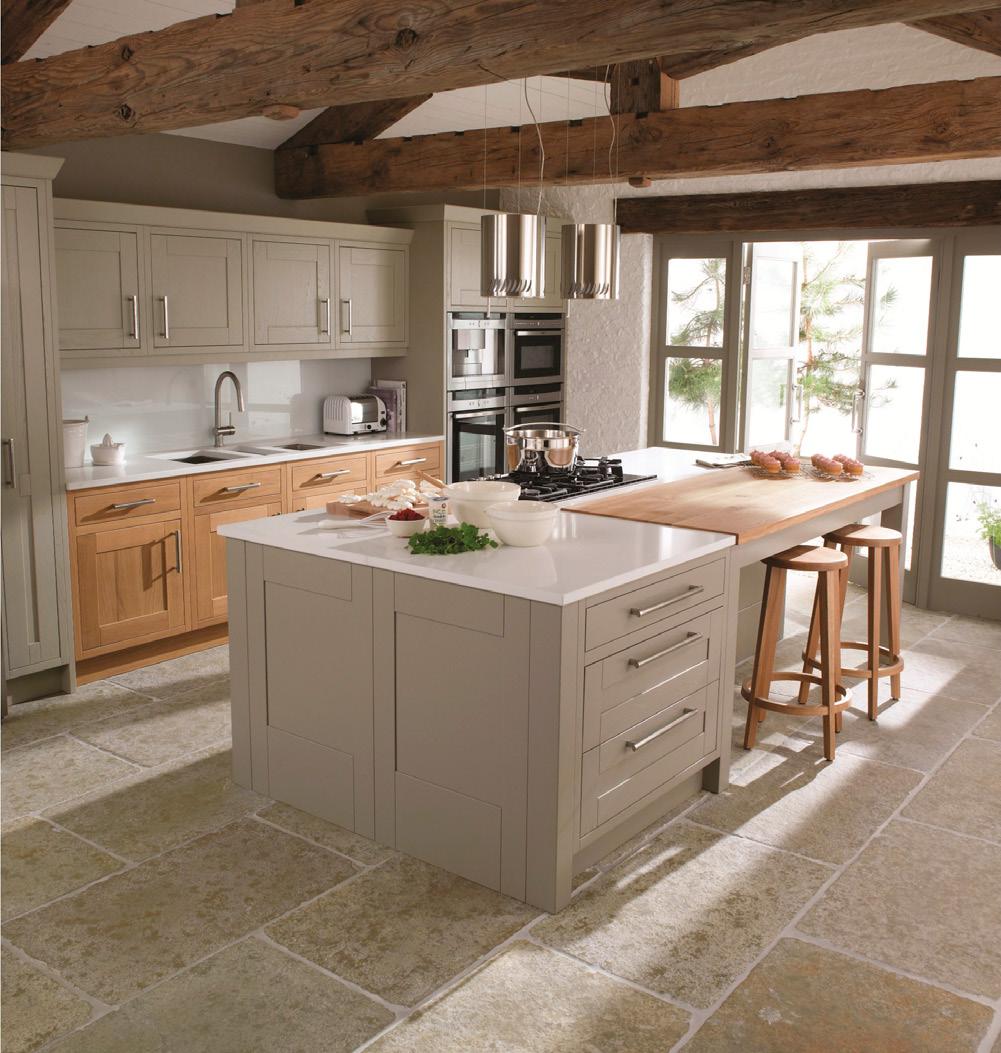Wildflowers
MAMMAL MAGIC THE SECRET WORLD OF SHREWS AND VOLES

SIMPLE SEASONAL SUPPERS for easy entertaining
LET’S GROW!
Vegetable gardening made easy










MAMMAL MAGIC THE SECRET WORLD OF SHREWS AND VOLES

SIMPLE SEASONAL SUPPERS for easy entertaining
LET’S GROW!
Vegetable gardening made easy









Spring 2023
9 LIFESTYLE
Inspiring ideas for your home and garden.
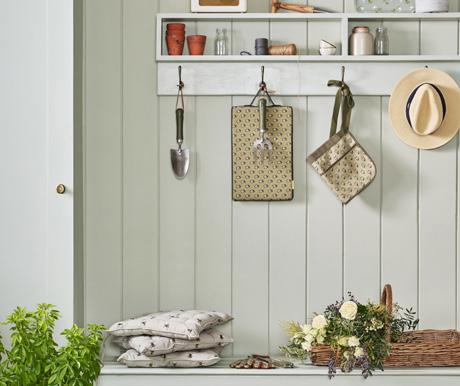
18 WILD THING
Once a rare sight, the little egret has been popping up in the Dales, says Brian Pike.
20 FEISTY FURBALLS
Brian Pike takes a close look at our native shrews and voles.

26 PRIMROSES FOR TEA
A heavenly china display to make this Easter.

33 SPRING SPARKLE
Wildflowers of the Yorkshire Dales and where to find them.
40 LET'S GROW
Make this the year you raise your veg-growing game, says Adam Appleyard.

47 GARDEN NOTES
Garden news, products and advice for the new season ahead.
50 ANIMAL MAGIC
Hannah Russell tells us about her exciting new visitor centre opening in Masham.
55 FOOD NOTES
Food news, events and fabulous seasonal, local produce.
60 THE DISCERNING DINER
Claudia Blake has Sunday lunch at The Saddle Room in Coverdale.
64 TWO'S COMPANY
Delicious fast and fresh recipes from Orlando Murrin.
72 SUNSHINE DAYS
Ursula Ferrigno presents a collection of colourful dishes bursting with flavour.
80 MAKE IT QUICK
Rosie Reynolds shares some recipes and time-saving tips to make life easier.

88 COLLECTED WORKS
Good mantel clocks are still sought after and very affordable, says Adam Wasdell.

92 AUCTION HOUSE HIGHLIGHTS
Five stunning lots that made record sales at Elstob & Elstob.

97 GORGEOUS GETAWAYS
Brian Pike reports on two popular destinations to visit this spring.


104 DALES DIARY
A guide to local events compiled by Liz Hanson.
117 LETTER OF THE LAW
What happens when you can’t manage your own affairs?
129 TO DINE FOR
Great places to eat and stay in the Dales.
EDITOR Sue Gillman
DEPUTY EDITOR Brian Pike
PRODUCTION Claudia Blake
ADVERTISING Sue Gillman
ART EDITOR Stefan Suchomski
PROOF READER Steph Morgan
PROPRIETOR Sue Gillman
CONTRIBUTORS Adam Appleyard, Claudia Blake, David Elstob, Ursula Ferrigno, Michael McGarry, Orlando Murrin, Brian Pike, Rosie Reynolds, Hannah Russell, Adam Wasdell.
Dales Life m. 07970 739119 e. sue@daleslife.com www.daleslife.com
Opinions or statements expressed in this magazine are those of the individual and not necessarily those of Dales Life.


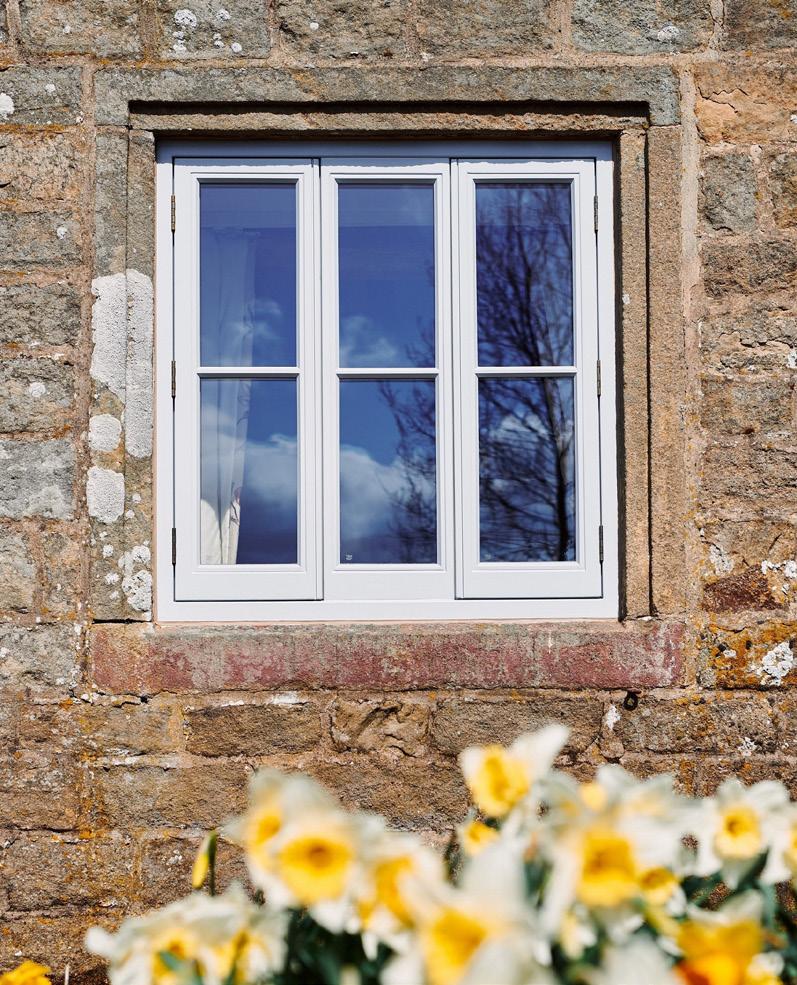


Welcome to the first Dales Life of 2023. This is an exciting time of year: the days are longer, new buds and shoots are emerging, and our local birdlife is very much in evidence. And on the subject of birds, the once rare little egret has been popping up increasingly frequently in the Dales. Find out about this elegant newcomer on page 18.
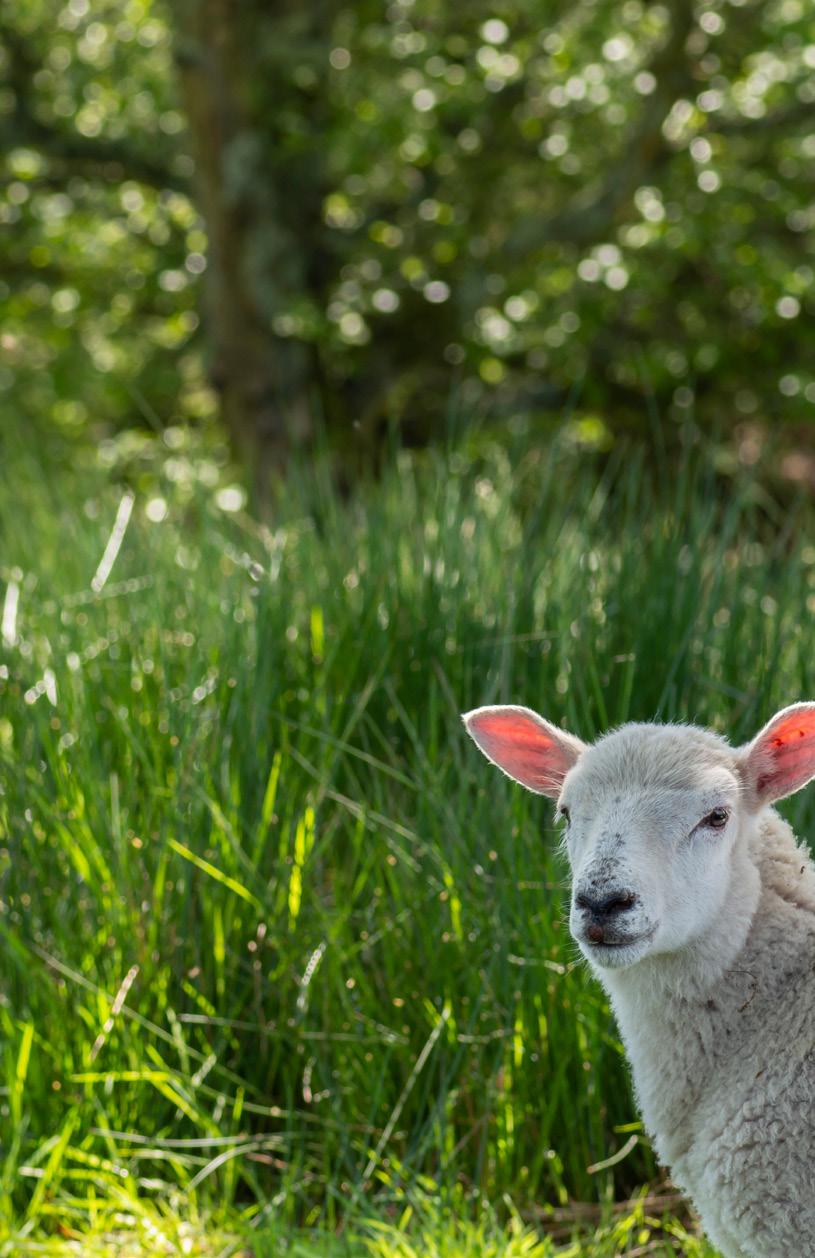
Did you know that the UK is home to over half the world’s population of bluebells? There are plenty of other interesting flowers to look out for in the Dales too – check out our photo-feature on page 33. As for plants even closer to home, nothing beats growing your own vegetables – and now is the perfect time to start. Turn to page 40 for some in-depth advice.
Finally, a piece of good news for readers living in areas our distribution team can’t cover. We’ve introduced lots of new collection points, and even commissioned some smart new counter stands to put in them! There’s a full list of places to pick up your copy of the magazine at daleslife.com
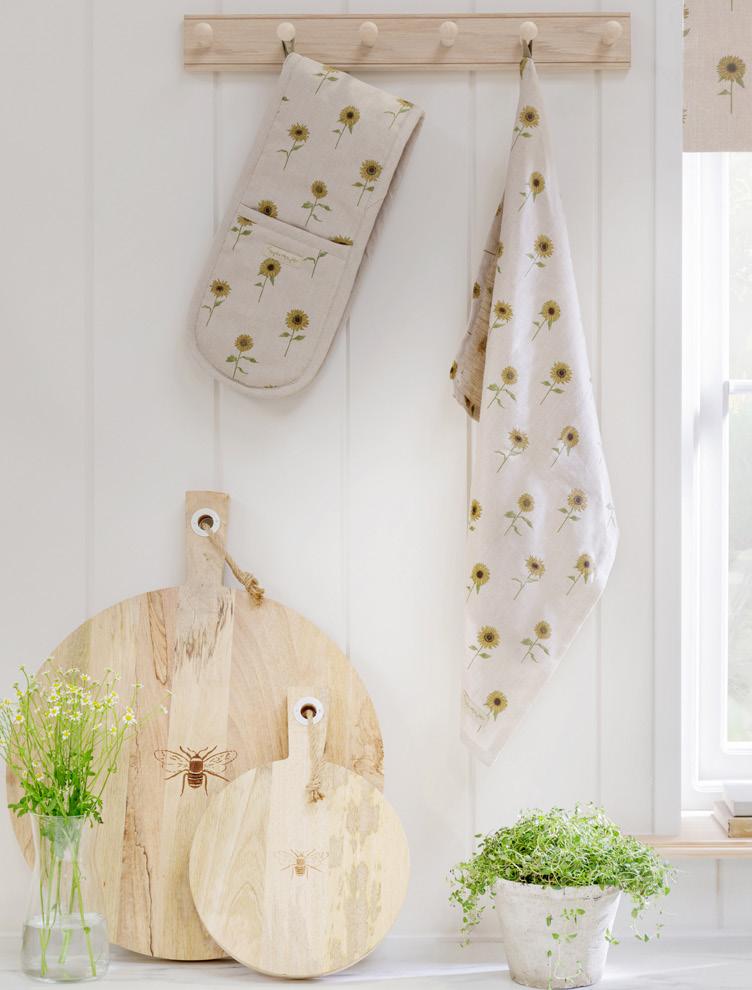
Exquisite pure linen fabric from the new Paradiso collection by Jane Churchill, Milners of Leyburn, milnersofleyburn.co.uk

Hand-painted bluebell flower gin glass by Lynsey Johnstone, Mainsgill Farm Shop, mainsgillfarm.co.uk

Rattan ice bucket in Rustic White, rebeccaudall.com Gluggle jug, available in a range of colours at Dovetail Interiors, Bedale, dovetailinteriors.co.uk

‘Lay A Little Egg’ fine bone china egg cup by Sophie Allport, Dovetail Interiors, Bedale, dovetailinteriors.co.uk


Blue Viola stoneware mug and coaster by Gisela Graham, Mainsgill Farm Shop, mainsgillfarm.co.uk
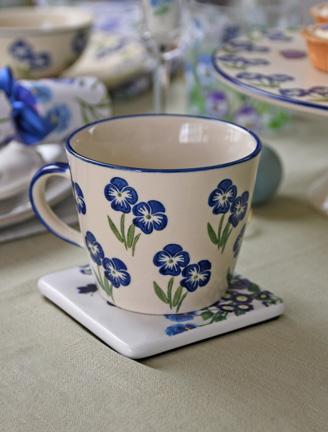
Handmade linocut print cushion by Rebecca Perdue, Green Howards Museum, Richmond, greenhowards.org.uk
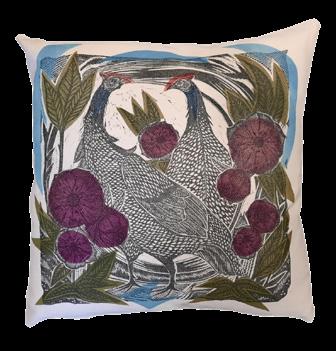






inspiring ideas for your home and garden




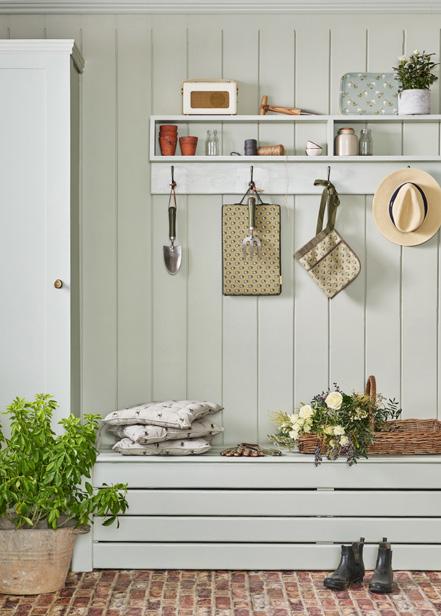


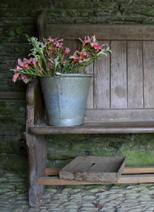




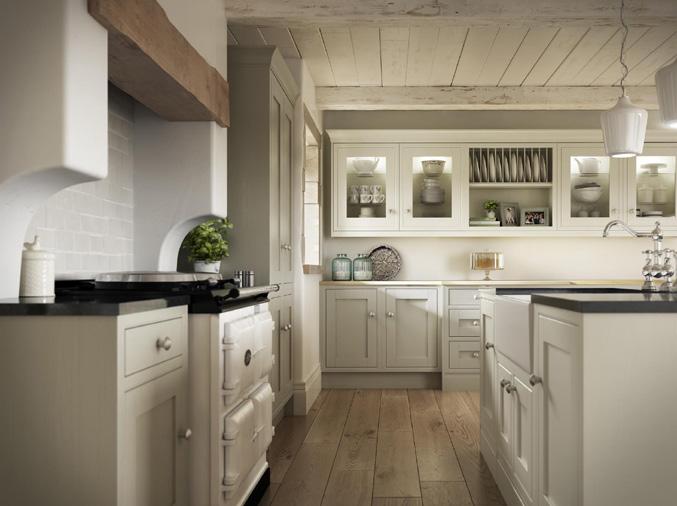





A small illustration business based in Yorkshire.

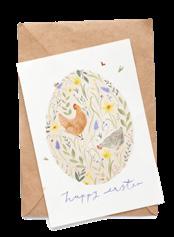



All products are printed on fully recycled paper for a luxury finish and are shipped in sustainable packaging.
hannahlgreen.co.uk

Give your home spaces a refresh with light and airy colours from Dulux. We stock the full Dulux range and we can match and mix more colours too.

Elegant handmade Midhurst two-seater sofa upholstered in the V&A Collection’s ‘Botanical Collage’ fabric, available from Sofas & Stuff, The Clock Tower, Harrogate, HG3 3BF. Telephone 01423 774020.
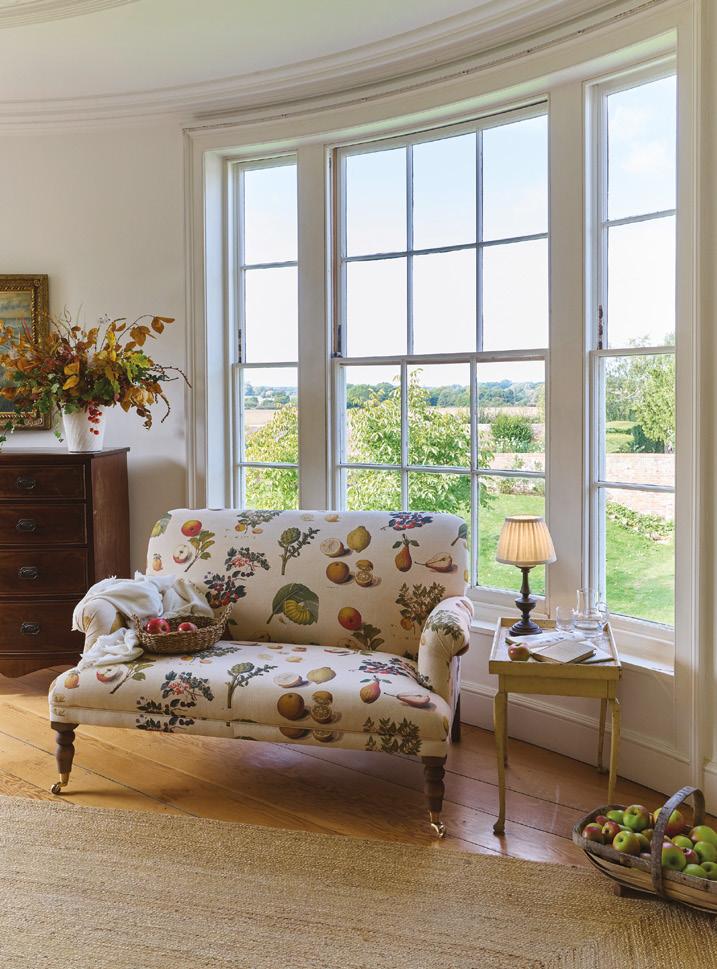







shop online www.vickidavidson.com hello@vickidavidson.com



❖ VISIT Come and see us for works by the finest local and regional artists and makers.
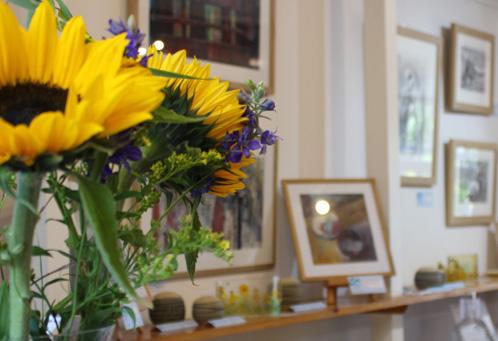

❖ STAY We have fabulous accommodation overlooking Aysgarth Falls.

❖ CREATE We have a range of exciting art classes.
❖ GAZE We are a dark-sky friendly business involved in astronomical events.
nce a rare sight, the little egret has been gradually expanding its foothold in the UK since the 1990s.
Initial sightings of this small white Mediterranean heron were largely confined to coastal southern England. But the elegant newcomer has worked its way steadily northwards, and during the last few years has popped up increasingly frequently in the Dales.
The little egret’s diet consists mainly of small fish, amphibians and crustaceans, so it’s no surprise that it is drawn to stretches of open water such as the flooded quarries at Nosterfield and Bolton-on-Swale Lake nature reserves.

The bird can also be seen elsewhere, though. Small groups are regularly spotted along quiet waterways such as Gilling Beck, pottering about in the neighbouring pastures and arable fields.
It may be a novelty for modern birdwatchers but the little egret was relatively common in Britain until the late Middle Ages. And not just in the South; it is recorded that large numbers of egrets were consumed at a banquet celebrating the accession of the Archbishop of York in 1465. Unfortunately a combination of over-enthusiastic hunting and the trend towards cooler summers between 1300 and 1850 (the so-called ‘Little Ice Age’) drove the UK population to extinction. However, now that global temperatures are rising again the little egret appears keen to reclaim its former haunts.


ice are familiar creatures, especially to country dwellers –they are, after all, the small mammals most likely to sneak into our houses in search of food and shelter. Shrews and voles, by contrast, keep themselves to themselves, and are consequently shrouded in mystery.
Many of us aren’t entirely sure how to distinguish between the three different groups of animals, so let’s start by separating the mice from the rest. Think of the classic cartoon Mickey Mouse – big eyes, big ears and long tail – and you’ve got the basic recipe for a mouse, be it a house mouse, field mouse or harvest mouse. Shrews and voles have none of these traits. Their eyes and ears are small, and their tails are short.

So now all we need to do is distinguish shrews from voles, which is easy enough. Voles have blunt noses and shrews have long, pointy ones.
Although superficially similar, shrews and voles have very different lifestyles. Our three native shrews – the pygmy shrew, the common shrew and the water shrew – are all primarily carnivorous, whereas voles are almost exclusively vegetarian.
Tiny they may be, but shrews are ferocious predators – and, arguably, Britain’s oddest mammals. For one thing they have a poisonous bite. It’s their saliva that carries the venom, and it is transferred to their victim via razor-sharp, grooved teeth. A shrew bite poses no threat to humans, but if you’re a worm, a slug or a woodlouse it’s a very different story.
Shrews live life in the fast lane. They have a phenomenally high metabolic rate: a pygmy shrew’s heart beats more than 1,000 times per minute. Its owner is active night and day, sleeping only in short bursts. Pygmy shrews simply can’t afford to take things easy because they need to consume more than their own body weight’s worth of food every day to survive.
Thanks to their supercharged lifestyle, our native shrews possess another surprising feature: red teeth. This unusual colouration is due to iron deposits that help reinforce the animals’ dental enamel and ensure their teeth don’t wear out too fast. Yes, that’s right, shrews have metal gnashers!
As the name suggests, the pygmy shrew is the smallest of our native shrews, a sharpnosed, grey-brown creature with a body measuring around 5cm long and a 3cm tail. The average pygmy shrew weighs around 4 grams – about the same as a 5p piece.
Slightly bigger, at around 6.5cm with a 3.5cm tail, the velvety grey-brown common shrew weighs roughly as much as a pound coin. Like the pygmy shrew it can be found in a wide range of different environments: arable land, grassy places, gardens and woodland.
Biggest of the bunch, at around 10cm plus a 7cm tail, is the water shrew, which is notably different both in terms of colour scheme and habitat. The water shrew’s velvety fur is jet black on top and white underneath. It’s a semiaquatic animal, seldom found far from the streams, rivers, ponds or ditches into which it dives in pursuit of aquatic insects, shrimp, water snails, small fish, frogs and newts.
Because of its specialised habitat, and also because of continuing pollution of watercourses, the water shrew is less common than our other two species of shrew, although not so rare as to have triggered concern amongst conservation groups.

Compared to shrews, with their fatal bite, fast-forward metabolism and iron teeth, voles – which are close relatives of hamsters and lemmings – are pretty middle-of-theroad mammals.
Both the field vole and the bank vole can be found in rural and suburban gardens and in the countryside at large. Field voles favour grassland, heathland and moorland whereas bank voles are more at home in hedgerows and woodland. However, their ranges frequently overlap, so where you find an animal isn’t necessarily a guide as to which species it is.
Bank voles tend to be chestnut brown whereas field voles are usually greyish brown, but the most reliable way to distinguish them is by the length of the tail. Bank voles have significantly longer tails – about half the length of the animal’s body as opposed to the stubbier tails of field voles, which are usually less than a third as long as the animal’s body.
OPPOSITE Water shrew on a mossy bank

TOP Young bank vole

BOTTOM LEFT Common shrew foraging
BOTTOM RIGHT Baby water voles feeding

Field voles feed predominantly on grass shoots and mosses — hence their preference for open grassy habitats — whereas bank voles have a diet that includes plant roots, seeds, nuts, berries and fungi.

Field and bank voles are amongst our commonest mammals, and an important food source for owls, kestrels, stoats and weasels. By contrast, the plump and photogenic water vole, our largest native vole, has suffered a catastrophic decline in numbers over the course of the last half century, having disappeared from around 95% of its former habitat.
This has been due in part to pollution and the remodelling of watercourses, and in part to predation by the American mink that escaped – or were released – from fur farms during the 1960s and have now established themselves in the wild.
Since 2008 water voles and their habitat have had full legal protection under the Wildlife & Countryside Act. Without this legislation and the active intervention of various conservation organisations they would almost undoubtedly have become extinct in the UK.
One local nature reserve that is championing the water vole is Foxglove Covert in Catterick Garrison (foxglovecovert.org.uk). Reserve staff regularly monitor the site to ensure that it isn’t invaded by mink, and thanks to their vigilance water voles are regularly spotted chowing down on the apples provided on the reserve’s floating vole-feeding platforms.

H a n n a h R u s s e l l L I T T L E A
M e e t L i t t l e A l f f r o m t h e b e s t s e l l i n g
b o o k s e r i e s , E x p e r i e n c e d a y s , a n i m a l s
h u s b a n d r y w o r k s h o p s , V a l a i s b l a c k
Meet Little Alf from the best-selling book series. Enjoy experience days, animal husbandry workshops, Valais Blacknose sheep, alpacas and more…




n o s e s h e e p , a l p a c a s & m o r e . . . .
w w w . h a n n a h l i t t l e a l f a n d f r i e n d s . c o m
Primroses (Primula vulgaris) epitomise spring, and the first yellow sightings of them give me hope that winter has finally ended. They used to grow much more abundantly in the wild and became a rural industry in the nineteenth century, when trains transported posies of them in tissue-lined boxes to the cities.
Now they grow more sparsely in hedgerows and woodland, and I would never pick them to make an arrangement. Instead, I buy or dig up an existing plant growing in my garden and then, when the arrangement is no longer looking its best, I plant it back in the ground, somewhere cool and shady, where it will thrive and multiply, knowing that I’ll have twice as many to bring inside next year.
There’s something ethereal about primroses and, to exaggerate their fragility, I chose the oldest, most delicate china for their containers. However, with china there’s no in-built drainage, so you need to improvise and make your own. I sprinkle gravel or wood chips at the bottom before potting and usually the plants stay perky.
Primroses do like to be as cool as possible—they really can’t cope with being hot and in direct sunlight, where they will wilt sulkily right in front of your eyes. This display lasted happily for weeks in my chilly bathroom. I’ve also decorated an Easter tea table with primroses in china. They look heavenly dotted around in cups on saucers mixed in with actual cups of tea and cakes.






Gravel or wood chips

Pretty china bowl and cup with saucer
2 primrose (Primula vulgaris) plants
Potting compost
Sphagnum moss


1 Put a 1cm layer of gravel or wood chips at the bottom of the bowl or cup.
2 Position the primrose plants in the centre and fill in any gaps with potting compost.
3 Decorate the top of the potting compost with pieces of sphagnum moss, and water well.
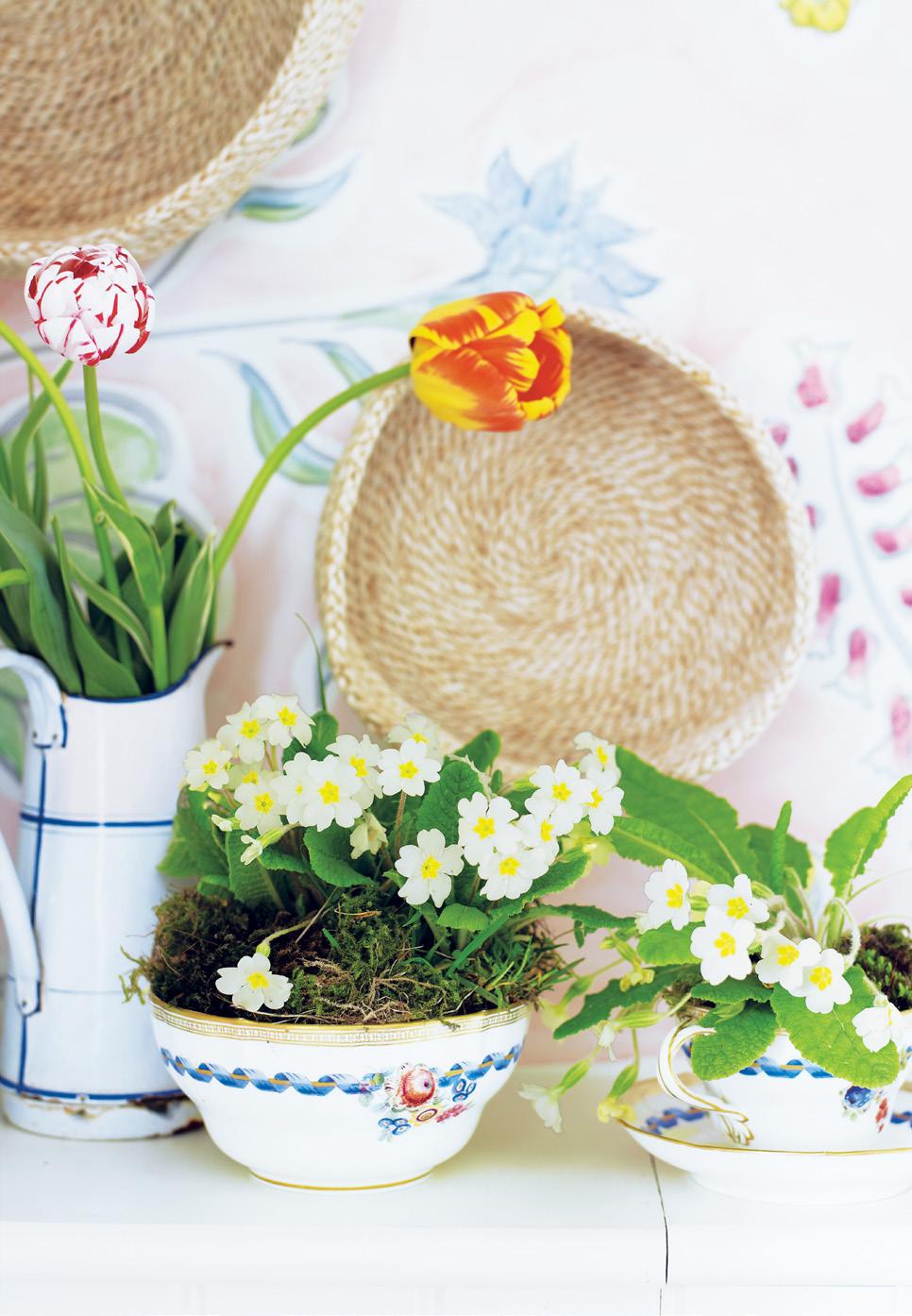
Taken from Inspire by Willow Crossley, published by CICO Books (£25).

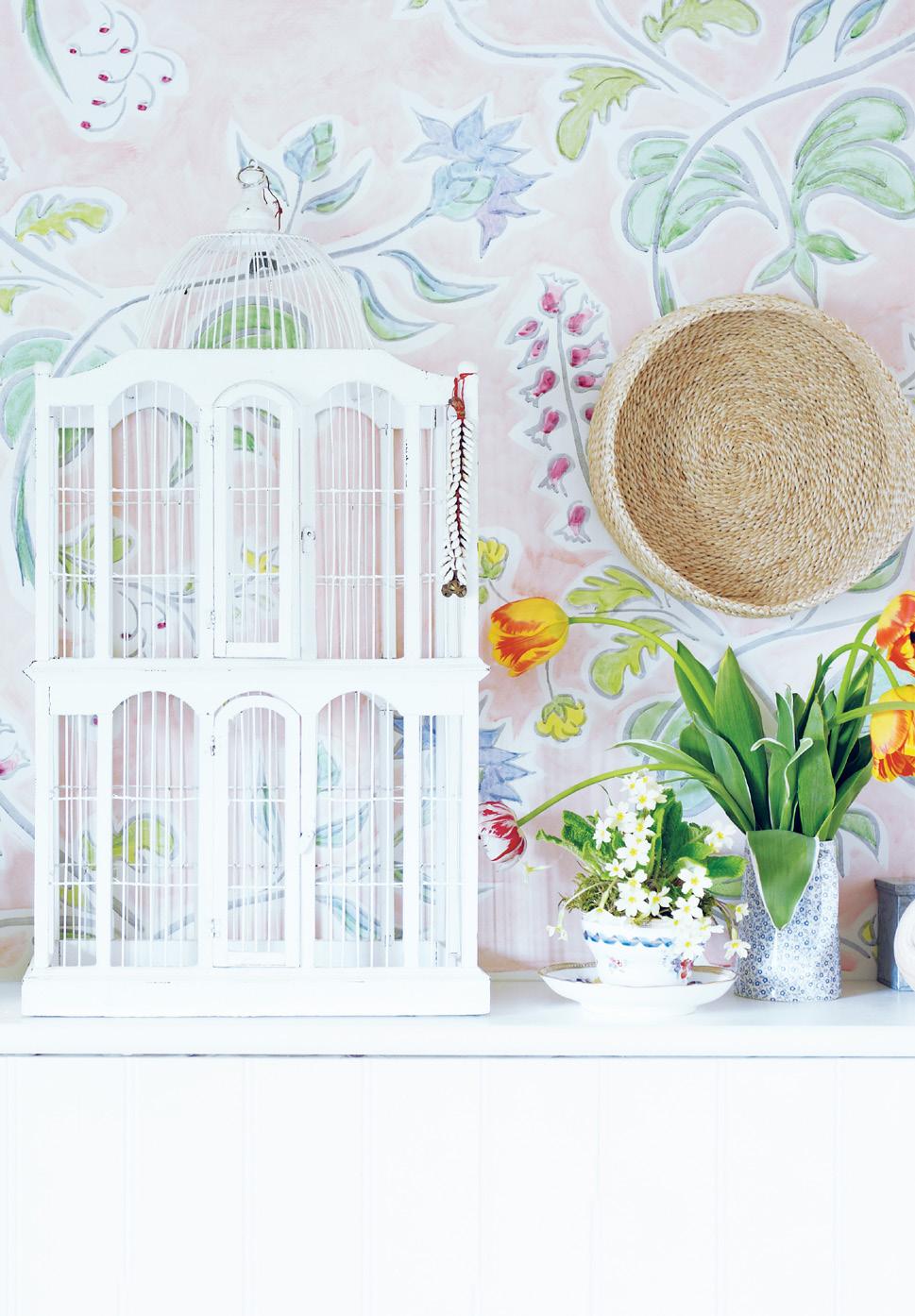
Photography by Emma Mitchell
© CICO Books.
In the Middle Ages, primroses were used to make love potions. It was also believed that primroses had great healing powers and could even cure paralysis.










At Castle Timber Buildings we make an incredible range of buildings including sheds, stable blocks, garages, garden rooms and summerhouses.

All our designs are fully bespoke and made in the highest quality timber by our talented cra smen here in Yorkshire.



The pale pink cuckoo flower, also known as lady’s smock, is common in damp meadows and blooms profusely from April through to June.
Yellow, purple or a combination of both colours, the mountain pansy is the largest of our native violets. It thrives on lime-rich, closegrazed Pennine grassland.

The vibrant magenta, richly scented early purple orchid grows in unimproved hay meadows, hedgerows and ancient woodland.


Sea thrift is primarily a maritime plant, but it also flourishes on riverside shingle at Ballowfields
Nature Reserve near Carperby.

This distinctive plant, steeped in folklore, favours damp, shady spots in ancient woodlands like Freeholders Wood near Aysgarth.
Bird cherry is a gorgeously perfumed showstopper of a small tree found in damp woodlands up and down the Dales.

Primroses are the quintessential flower of springtime, although in mild years they can start blooming as early as December.

This elegant lemonyellow member of the buttercup family thrives in damp flushes in the higher reaches of the Dales.

The increasingly rare wild daffodil can be found in isolated spots in the Dales – and, famously, in Farndale on the North York Moors.

The gently nodding water avens is common in shady spots alongside the Swale, Ure and Nidd.




Make this the year you raise your veg-growing game, says Adam Appleyard


ith retail prices constantly increasing there has never been a better time to start growing your own vegetables. And it couldn’t be easier. I’ll explain how to grow two kitchen staples – peas and carrots – along with rainbow chard, which is an excellent substitute for spinach, and salsify, a gourmet luxury.
And if you don’t have much of a garden don’t despair, because the first three can all be grown very satisfactorily in containers.
Even if you’ve got plenty of growing space there are two good reasons why you might, as I do, choose to grow carrots in containers.
Firstly, it decreases the likelihood that your crop will be ruined by carrot fly. The pests in question fly very low to the ground, so if you grow carrots in tall containers – or short containers raised on bricks – you’re less prone to problems. Aim for the lips of your containers to be 80–90cm above ground level.
Secondly, growing carrots in open beds requires a certain amount of soil preparation, namely digging out stones and improving heavy soil with sand, compost or manure. With a container it’s simple: plonk it in a sunny spot, fill it with decent multipurpose compost and you’re good to go!
The main carrot-sowing season is from April to June. Sow seeds thinly in 2cm drills (narrow trenches), spacing rows by 7–10cm. Cover them over, firm down the soil or compost and water well.
Your seedlings should emerge in a fortnight or so. Once they’re well established, thin them to 5cm apart. Water regularly in dry spells, but don’t overdo it – carrots detest being waterlogged.
Depending on the variety, your carrots will be ready to pull two or three months after sowing, so sow small quantities at regular intervals to ensure a regular supply through until autumn.
Peas are easy to grow, either in garden beds or in containers. Be aware, though, that they are climbing plants, so if you opt for containers it’s best to choose short or dwarf cultivars to make supporting them easier.

They can be sown any time from March to midJuly and will be ready to harvest after about three months. As with carrots it’s good practice to sow a row – or container’s worth – every few weeks to ensure a regular supply.
Pea seeds need to be soaked in cold water for 24 hours before planting, then sowed 3cm deep and 8cm apart. In open ground this can be done in two parallel rows 15cm apart, making it easy to build a supporting structure over them. In a container sow them in a rough grid with each pea 8cm distant from its neighbour.
The traditional way of supporting peas is with ‘pea sticks’, which are simply decent lengths of wellbranched prunings from whatever overgrown tree or shrub you have to hand. Hazel is excellent, but dogwood, birch, buddleja and the like will all do. If you can’t source pea sticks, build ‘wigwams’ out of garden canes and twine, tying your pea shoots into them as they grow.
Peas like slightly more water than carrots, especially when the pods are beginning to fill out, so don’t let them go thirsty during long dry spells.
Even if it wasn’t a delicious, super-healthy leafy vegetable it would be worth growing rainbow chard for its decorative value alone. With its vibrant palette of crimson, white, yellow and glossy green it can be used as an eye-catching path edging in the vegetable garden or planted in clumps in flower borders for an electrifying pop of colour.

Chard is easier to grow than spinach because it is less prone to ‘bolt’ (go to seed). It’s also a great ‘cut and come again’ crop because as soon as it has reached a usable size – which will be in 10 to 12 weeks – you can harvest young, tender leaves for several weeks, if not months.
Sow chard in shallow drills, around 2cm deep, at any time between March and August, in rich, moist but free-draining soil. It can tolerate a certain amount of shade, especially during the long hot days of high summer.
Young plants should be thinned to 25cm apart – you can, of course, eat the thinnings – and kept well watered. Other than this, chard requires very little attention.
You can use chard in much the same way as spinach, that’s to say simmered or steamed, but separate the tougher leaf blades from the stems and cook them for a minute or two longer. The taste is similar to spinach, albeit a little bit stronger.

Salsify isn’t always easy to come by in the shops, but it’s one of my favourite root vegetables. It’s rather like a long, thin, snow-white (when peeled) parsnip, with a subtle savoury-sweet flavour that’s reminiscent of artichoke hearts or asparagus. Salsify is particularly delicious baked, sautéed or braised in light stock.
Because it is so deep-rooted, salsify isn’t a good choice for container growing. On the plus side, like rainbow chard it’s actually a very handsome plant in its own right. Imagine a spiky violet dandelion on a metre-high stalk… it’s pretty impressive and definitely worthy of a place in the flower border.
Grow salsify in a sunny spot on fertile, welldrained soil that’s as stone-free as you can make it. Sow seeds 1–2cm deep in rows 30cm apart and thin young plants to a distance of 15cm. Keep weed-free.

Salsify will be ready to harvest from October onwards, but like parsnips the roots can be left in the ground during winter, and they will be improved by being frosted. Be careful not to snap them when digging them up. Carefully loosen the soil all the way around each plant, then gently prise the root up.
As well as the roots, the leaves of salsify can be eaten, raw or cooked.
All over Yorkshire, our thousands of happy customers have improved their homes with the superb quality of our products and workmanship and are taking advantage of great energy savings, security and style. From contemporary to traditional, we can design and fit a bespoke range of top quality window and conservatory solutions in a colour and style to suit you. The power of colour. The right choice of colour can greatly enhance the look of your new windows and doors.


At Lifetime we offer a bespoke colour service to all of our products. Choose from a Farrow & Ball or Fired Earth colour chart. Or bring us a colour and we will match it. All the benefits of maintenance free uPVC windows and doors while retaining the charm and character of your home.
Talk to the experts – we can bring your ideas to life. We offer a no obligation design and quotation service, so contact us today and tell us about your plans – we’ll be delighted to hear from you.
A newly opened independent bookshop, providing a friendly service in a relaxed and welcoming environment. Stocking a wide range of books for adults and children, we also sell a unique range of cards, stationery, toys and gifts. Our ordering service enables us to source any book in print -please just ask!

Happy reading!

Alan and Claire
thewonkytreebookshop.co.uk


With its profusion of eyecatching flowers carried on leafless branches, the Japanese quince is the perfect plant to light up a dark corner in spring. Available in a range of colours, including white, pink and crimson, it grows to a metre tall by two metres wide, and its spreading branches can be trained up a wall or trellis.

Parsnips need a long growing season, so sow them as soon as the soil has warmed up, preferably by early May. Use fresh seed, because parsnip seed doesn’t age well. Sow it 1.5cm deep in rows 30cm apart. Don’t be tempted to dig in manure; too rich a soil will cause parsnip roots to fork.

White plastic plant markers have been the go-to option for most gardeners for years. But plastic is problematical, and white looks distinctly dull. Colourful wooden plant markers, like these from sarahraven.com, solve both problems. And by colour-coding your pots of vegetable seedlings you can see what’s what at a glance!

Now’s the time to sow sunflowers for a super summertime display – and a seedy autumn feast for garden birds. Sow sunflower seeds individually, 3cm deep in pots of multipurpose compost on a sunny windowsill or in a greenhouse. Transfer young plants outdoors when the danger of frost has passed.

For the best possible colour effect, prune the stunning red stems of Cornus alba ‘Sibirica’ back hard in March or April, leaving just two buds on each stem. This will encourage a crop of brilliant red new stems in place of the older, more weathered ones.

Achocha vines may look exotic but they’re surprisingly easy to grow. Start seeds off indoors in spring and transfer plants outdoors once the frosts are over. Provide something to climb up and they’ll be two metres tall before you know it!

fruits taste much like green peppers and are
Love cherry blossom but don’t have much space? Prunus incisa ‘Kojo-no-mai’, the dwarf Fuji cherry, has a height and spread of two metres and grows happily on most soils and even in large containers. Every spring its zig-zag stems will be laden with masses of small, pale pink flowers. You can find ‘Kojo-no-mai’ at Braithwaites, Leeming Bar (braithwaitesnursery.co.uk).

Traditional is trending! These hazel hurdles from Fall Timber at Leeming Bar Industrial Estate (falltimber.co.uk) are ideal for establishing boundaries, separating sections of the garden, and creating screens or windbreaks. Hazel hurdles are attractive, hard-wearing and eco-friendly, and their natural colouring makes the perfect backdrop for pretty much any style of planting.

This smart stainless steel RHS-endorsed scoop from Burgon & Ball (burgonandball.com) is ideal for filling pots and containers without annoying spills and wastage.

Now’s the perfect time to divide water lilies –something you’ll need to do every few years to maintain their vigour. Remove the tubers from their pond baskets and cut them into 8–10cm lengths, making sure each section has at least one bud. Repot these in aquatic compost and you’ll soon have a host of new plants.

The
It’s a scoop!







Hannah Russell tells us about Swinton Green, her exciting new visitor centre in Masham

obody could accuse Hannah Russell of resting on her laurels – or of using hardship as an excuse for taking it easy.
Many Dales Life readers will be familiar with Hannah as the author of the ‘Little Alf’ children’s books. In the series she recounts the exploits, real and imaginary, of the diminutive Miniature Shetland pony she adopted at the age of 16 when she was recovering from the trauma of the riding accident that dashed her dreams of becoming a riding instructor.
Hannah wrote her first ‘Little Alf’ book the following year. Since then she has not only launched a number of business initiatives – including interior design and fashion ventures – but also travelled the world as a motivational speaker and charity ambassador. But now she has a bold new project: Swinton Green, an animal-themed visitor centre a stone’s throw from the luxurious Swinton Park hotel and spa near Masham.
Like the ‘Little Alf’ books, the Swinton Green project was prompted by an episode of ill health. In 2020 Hannah was diagnosed with cancer. A series of gruelling operations, radiotherapy sessions and other treatments followed. She has been in remission since last year, but the experience prompted her to reevaluate her priorities.
“It put life into perspective,” says Hannah, “and made me realise that I wanted to spend a lot more time with my animals. For years now I have dreamed of having a visitor centre where people could connect with them, and now everything seems to have fallen into place. In a chance conversation with the Swinton Estate we heard about an eight-acre smallholding that was coming up for rent. We sold the family house and my mum, dad and I moved in last summer.”
Swinton Green is very much a family enterprise, with Hannah’s gardening enthusiast father in charge of looking after the plants, her artist mother designing the outdoor areas, and her brother John helping out when he’s not too busy elsewhere.
But already Swinton Green’s humans are vastly outnumbered by the smallholding’s animal residents. As well as the 28-inch-high Little Alf there are two other Miniature Shetlands, along with six Valais Blacknose sheep, four Pygmy goats, five chickens, two rabbits, a guinea pig and four dogs. When we spoke to Hannah, three alpacas were due to arrive within days, and there was also a tortoise on the way (presumably at a rather more leisurely pace).


The opportunity to meet literary celebrity Little Alf will undoubtedly be a big draw for social-media-savvy Hannah’s 12,000 Twitter followers, but there are plenty more activities and experiences planned for Swinton Green visitors – in fact Hannah has no shortage of ideas for different ways to engage the public.
Alpaca walking is likely to be a particularly popular activity, says Hannah. “People will be able to come along and meet the alpacas, put them on halters and walk them through our wildflower meadows, meeting our other resident animals along the way. And don’t worry, alpacas are much friendlier and less temperamental than llamas!”

Hannah is also planning to run a wide range of workshops, including animal husbandry sessions aimed at smallholders who are just starting up or who want to hone their skills. Whether it’s chickens, goats, sheep, alpacas or horses, Hannah, a qualified course leader, will be able to explain how to care for them.




Valais Blacknose sheep, a cute and engagingly fluffy rare breed originating from Switzerland, are one of Hannah’s special interests. They have very specific care requirements – dealing with their long curly hair being one obvious issue – and Hannah is planning to share her expertise in managing the breed with other enthusiasts.
Valais Blacknose sheep are notably friendly, and evidently very intelligent too. Hannah has her original pair, Izzy and Ida, impressively well drilled, having taught them using the same clicker training method often employed by dog trainers.

Hannah isn’t neglecting the insect world either. A tropical butterfly house is scheduled to open by June, and eventually Hannah is hoping to run beekeeping courses too.
Plant lovers will also be catered for at Swinton Green. Hannah has already run her first terrarium workshop in the cosy on-site wooden cabin. The session proved a big hit, and is likely to become a regular feature.
Hannah is clearly fizzing with ideas for Swinton Green, and by the time you read this she may well have had several more. When we last interviewed her for Dales Life her advice to budding young Dales business folk was to “be upbeat, and focus on the positive.” It’s clearly an attitude that has helped her achieve an impressive amount already – and we can’t wait to see what she goes on to do in the future! Swinton Green will open in late spring; for more details visit swintongreen.co.uk. For information about Hannah and Little Alf, as well as Hannah’s online shop and links to Hannah’s social media streams, visit hannahlittlealfandfriends.com

As the weather warms up we will have a huge range of home grown, colourful summer bedding. All of your traditional garden favourites will be available and also lots of new and exciting varieties to try out!
We have a beautiful selection of trees, shrubs, alpines, herbaceous plants, fruit trees and much, much more.




We have been growing the plants for North Yorkshire’s gardens for over 125 years - call in and see what we have for you.
Our florist can provide hand-tied designs, bouquets and arrangements for any occasion.
01677 422861
www.braithwaitesnursery.co.uk
enquiries@braithwaitesnursery.co.uk
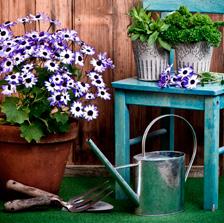


















The time for giving Easter eggs is looming – and just how impressive would it be if you actually made your own chocolatey seasonal surprise? The Swinton Estate Cookery School is offering the chance to learn how to do just that, with courses aimed at both junior (5 April) and adult (6 April) chefs. Find out more at swintonestate.com


The Cheese Press on Victoria Road, Richmond, stocks a range of delicious local, British and European artisan cheeses alongside a carefully curated selection of drinks and accompaniments to pair with them. They also supply hampers, platters and cheesecakes for weddings and other celebrations. For opening hours and details of their popular cheese-tasting events check out The Cheese Press Instagram feed at #thecheesepressrichmond
Nothing beats delicious fresh asparagus, and Yorkshire asparagus ranks amongst the country’s best. Spilmans asparagus, grown in the sandy soil of Church Farm, Sessay, near Thirsk, is a perfect example – hand-picked and promptly delivered to top hotels and restaurants plus a select handful of independent shops. You can buy Spilmans asparagus from The Greengrocer in Market Court, Bedale.

Easter is a great excuse to indulge in something sweet, and if you fancy some cracking cake, Mainsgill Farm Shop mainsgillfarm.co.uk) on the A66 just west of Scotch Corner is the place to find it. Mainsgill’s cake counter is crammed with mouthwatering goodies freshly made on site, including scrumptious chocolate cakes and traditional Easter treats such as luscious marzipan-topped simnel cakes.

Looking for something a little bit different in the meaty treat line?
‘Rack on Black’ is one of several tempting new dishes on offer at the butchery department at Campbell’s of Leyburn (campbellsofleyburn.co.uk).
It’s a rack of lamb stuffed with black pudding and finished with mixed herbs – simply pop it in a roasting tin and it’s good to go!

This year dedicated gardener Susan CunliffeLister will once again be running her themed garden lunches at Swinton Park. As well as a twocourse lunch featuring ingredients from Swinton’s walled garden, guests can enjoy a talk and a guided tour of the grounds. The first garden lunch is on 9 May. Visit swintonestate.com for more dates, or call 01765 680900 to book.

Yorkshire spring lamb is famous far and wide for its taste and quality, and there’s arguably none finer than Mainsgill Farm’s. Mainsgill’s succulent, tasty, home-reared, grass-fed lamb is grazed on the lush green pastures of the Holmedale Valley and skilfully prepped by the farm shop’s in-house butchers. For opening times, or to order online, go to mainsgillfarm.co.uk


Hot cross buns were once eaten almost exclusively on Good Friday but fortunately nowadays you can enjoy them on more than just the one day a year! The luxury hot cross buns at Booths in Ripon (booths.co.uk) are baked by Bells of Lazonby and come in several fabulous flavours including chocolate and ginger, and apple and cinnamon.

Seville oranges are far too bitter to eat raw, but it’s that same bitterness that makes them the ideal ingredient for marmalade. Mashambased Rosebud Preserves (rosebudpreserves.co.uk) import organic oranges from Seville every January and craft them into their hugely popular Seville Orange Marmalade. Sweetened with unrefined sugar and naturally set, it’s rich, fruity and full-flavoured –the perfect breakfast-time pick-me-up!

Chicken connoisseurs know there’s no substitute for a free-range bird, and delicious free-range chickens – from Yorkshire, naturally – are now back in stock at Campbell’s of Leyburn (campbellsofleyburn.co.uk) after a brief absence due to bird flu. Reserve a bird or check what else is in stock by calling Campbell’s butchery department on 01969 625600.






There’s always a warm welcome awaiting you at The White Bear
High quality food, cooked to perfection using fresh local, free range produce. New spring menus • Excellent selection of wines, craft beer and ales. Seasonal cocktails • 14 beautiful bedrooms.

Wellgarth, Masham, North Yorkshire HG4 4EN • 01765 689319 •


Unique
Enjoy Roux Scholar Jonathan Harrison’s unique cuisine in the traditional surroundings of the Sandpiper Inn.
Modern British food using only the finest local ingredients, beautifully prepared and presented.


Fine wines, real ales and friendly service.
Market Place, Leyburn, North Yorkshire DL8 5AT sandpiperinn.co.uk
Tupgill Estate, situated in the heart of the Yorkshire Dales with 513 acres of glorious Yorkshire countryside, is home to e Saddle Room restaurant.
At e Saddle Room we believe passionately about sourcing our ingredients from really local suppliers and wherever possible within a 10-mile radius of the restaurant.
e Saddle Room also has 5★ rated Accommodation with Cottages and Bed and Breakfast rooms creating the perfect place to relax and unwind.


✓ OUTDOOR DINING IN “THE PADDOCK”
✓ NEWLY REFURBISHED ACCOMMODATION
✓ OPEN FOR WEDDINGS AND EVENTS
✓ PRIVATE DINING
Grand honest food cooked to perfection

Winner of Best Restaurant Herriot Awards


01969 640 596 | eat@thesaddleroom.co.uk

Tupgill Park, Coverdale, Leyburn, North Yorks DL8 4TJ www.thesaddleroom.co.uk


hen an eatery is called ‘The Saddle Room’ and can be found just a few minutes’ drive from the racehorse training town of Middleham it’s a safe bet the décor has an equine theme. Such indeed is the case.

Situated in the grounds of Tupgill Park – next door to North Yorkshire’s most eccentric tourist attraction, The Forbidden Corner – The Saddle Room is housed in a former stable. And if you’re looking for further references to the sport of kings, you won’t be disappointed. From the weighing scales at the reception desk to the cast iron hay racks on the walls of the dining ‘stalls’ there are plenty of horsey bits and bobs to admire.
Thankfully, though, it’s not overwhelmingly nostalgic or country-cute. The overall impression when you walk in on a Sunday lunchtime is of a spacious wood-and-stone environment with a cheery contemporary vibe, peopled by a correspondingly cheery, relaxed clientele and efficiently overseen by a legion of polite, neatly dressed staff.
It’s obvious from the menu that roast meat carved at the dining table is the jewel in the crown of The Saddle Room’s Sunday lunchtime offering, so we decided it would be churlish not to partake. That said, other options are available, and pescatarians and vegetarians needn’t go hungry. I flirted briefly with the notion of ordering the nut roast, but my carnivorous instincts got the better of me.
Before the main event, however, came the starters. And as soon as they arrived at the table – which was commendably promptly – we felt confident we would be getting some top-notch nosh. When food is presented as boldly and precisely as this was, you know that the folk in the kitchen have got their heads screwed on.
It’s hard to give a soup eye-appeal, but The Saddle Room’s cream of celeriac soup, topped with a tangle of sautéed wild mushrooms and swirls of vibrant green chive oil, looked both classy and compelling. Celeriac soup tends to be on the sweet side, but the mushrooms had been seasoned with a decent whack of salt, providing an ideal counterbalance. Accompanied by a hunk of excellent crusty bread, this was a splendid opening gambit.
Our other starter, whipped goat’s cheese with pickled and roast beetroot plus a dusting of lavender almonds, was equally well judged. The goat’s cheese, with its sharp, salty tang, was set off nicely by the sharpness of the crispy pickled beetroot and the round, earthy tones of the roast, with the toasted almonds adding a satisfying crunch. I couldn’t detect the lavender mentioned on the menu, but then nor did I bemoan its absence; the plateful was fine just as it stood.

Soon after we had downed our starters, a twoperson team turned up with a domed trolley and carved our mains: sirloin of beef and leg of lamb. An enjoyable piece of culinary theatre that resulted in two platefuls of remarkably generous slices of meat. Clearly we weren’t in danger of going home hungry.
In the case of both the beef and the lamb we were given top-quality meat cooked à point – and, in the case of the beef, pleasantly charred on the outside. The menu had promised “all the traditional trimmings”, a promise abundantly fulfilled by enormous Yorkshire puds, crisp and ethereally light, and a compendious selection of vegetables.
Prominent amongst these were herb-andsalt-crusted roast potatoes and a nicely browned cauliflower cheese made with lashings of tasty cheese. There was a cornucopia of extras, including charred onions, peas, green beans, kale, broccoli, carrots, roast parsnips and swede. None of them were overcooked, none were under. In short, a glorious veg-fest that put less conscientious establishments to shame.
After this meat-and-multiple-veg jamboree it was touch-and-go whether we could manage desserts. In the interests of research, though, we forced ourselves.
The treacle tart with salted caramel and beurre noisette ice cream was pleasant enough, but possibly aimed at guests with a sweeter tooth than mine; personally I would have liked something sharp on the plate to pep it up. However the Yorkshire forced rhubarb meringue roulade with Chantilly cream and rhubarb and anise sorbet was bang on the money. Super-sharp, pippingly pink rhubarb stems and a sumptuous sorbet perfectly complemented the crisp, cream-stuffed meringue. Refreshing, easy-to-eat and indulgent… just writing about it makes my mouth water!

So, as you’ll probably have gathered, we had a thoroughly enjoyable time. The pricing – £32 per head for the food in our case – seemed very reasonable for such a pleasant experience, and we would have no hesitation in declaring The Saddle Room a sure-fire winner.
For more information about The Saddle Room visit thesaddleroom.co.uk or call 01969 640596.
Detailed, conscientious cooking from a kitchen team who clearly know their onions.
Bright and buzzy atmosphere in a repurposed building with a race-horsing theme.
Prompt and personable; nothing is too much trouble.
The Sunday lunch menu is priced at £28 for two courses or £32 for three courses, drinks not included.
Wines by the glass start at £4.55 for 125ml or £6.50 for 250ml.
If Sunday lunch isn’t your thing, The Saddle Room also serves a wide range of light bites, lunches, evening meals and even breakfasts (the latter pre-booked only).


Our beautiful new cheese shop is located in the heart of Richmond.

We stock a range of delicious British and European cheese plus tasty accompaniments.
We always o er tasters and a friendly welcome.
So whether it’s a cheeseboard, a wedding, or a special occasion we’ll take the time to o er advice and chat cheese.

Why not join us at one of our popular cheese tasting events in our historic tasting room. Get in touch for more details.
7 Victoria Road, Richmond, North Yorkshire, DL10 4DW 01748 829789



thecheesepressrichmond.co.uk
thecheesepressrichmond

Any small shapes you have will do just as well

Make the sauce as you go along

SAUCE DIANE
This dish is super-easy

You can also make this with fresh raspberries


It seems fitting to serve shell-shaped pasta with a shellfish sauce, but really any small shapes you have to hand will do just as well.
1. Cook the broccoli and asparagus together in a large pan with plenty of boiling salted water, till just cooked – about 3 minutes. Drain well, reserving the water in the pan.
100g fine broccoli (such as Tenderstem), cut into bite-size pieces
125g fresh asparagus, cut into bite-size pieces
150–200g (depending on appetite) dried conchiglie, or other small pasta shape
25g butter
3 garlic cloves, sliced thinly finely grated zest and juice of ½ a lemon, plus a little extra to finish

250g cooked, peeled king prawns/ jumbo shrimp

125g mascarpone
1 tbsp snipped chives, plus extra to serve
3 tbsp freshly grated Parmesan, plus extra to serve
2. Bring the water back to the boil and cook the pasta in it till al dente. Drain till needed.
3. Meanwhile, heat the butter in a medium pan (big enough to hold the pasta in step 4) and fry the garlic gently for 2–3 minutes, but do not allow it to colour.
4. Add the cooked vegetables and lemon zest and simmer for 1–2 minutes, then add the prawns just to heat through. Stir in the mascarpone, lemon juice and chives, taste for seasoning, then add the drained pasta and Parmesan just to heat through. Serve sprinkled with more chives and lemon zest and extra grated Parmesan.

These tasty fishcakes are teamed with a tartar sauce that you make as you go along, the horseradish sauce and chopped egg listed are tasty, but optional, extras.
1 spring onion, chopped
1 tbsp freshly chopped or frozen dill, or other herbs
1 tsp capers, chopped juice of 1⁄4 a lemon
1 tsp Dijon mustard
1 tbsp mayonnaise
a pinch of cayenne pepper
50g smoked salmon (pieces or scraps are fine)
250g skinless salmon fillet
2 tbsp panko crumbs for the mix, plus about 4 tbsp for coating
3–4 tbsp oil, for frying lemon quarters, to serve FOR THE FLYING TARTAR
1 spring onion, chopped
1 tbsp chopped fresh or frozen dill, or other herbs
1 tsp capers, chopped juice of 1⁄4 a lemon
1 tsp Dijon mustard
3 tbsp mayonnaise
a pinch of cayenne pepper
2–3 small gherkins or cornichons, finely chopped
1 tsp hot horseradish sauce (optional)
1 hard-boiled egg, cooled, peeled and chopped (optional)
1. Put the first 7 ingredients for the fishcakes in a medium bowl. Finely chop the smoked salmon and add it to the bowl. Finely chop the salmon fillet – do this thoroughly, so that no pieces are larger than 5mm, fine if some of the fish gets actually mashed. Add this to the bowl with the 2 tablespoons of panko crumbs and plenty of seasoning.
2. Use a spatula to stir the mixture lightly together so everything is moist and combined, but not compacted. Sprinkle half the remaining panko crumbs onto a plate. Using a large spoon, lift out a quarter of the mixture, invert it onto the plate and shape into a flattish patty about 3cm thick. (A light hand helps here.) Repeat to produce 4 fishcakes. Neaten with your fingers, then sprinkle with the remaining panko crumbs. (The fishcakes can be chilled for 1–2 hours at this point if convenient.)
3. When ready to cook, pat the top of the fish cakes to secure the crumbs, then flip and do the same with the other side, so top and bottom are generously covered (don’t worry about the sides). Heat the oil in a medium frying pan till shimmering, then slide in the fishcakes. Adjust the heat as necessary so that after 3 minutes they are golden brown underneath, then flip and cook for 3 minutes more. Check they are cooked in the centre and serve.
4. For the Flying Tartar, simply mix the ingredients of your choice lightly. Serve with the fishcakes, along with the lemon quarters.
This dish became super-easy for the home cook since the introduction of demiglace sauce, available in good supermarkets in the chilled or larder section. If you can’t get it, simmer and reduce 200ml of good beef stock by half – because you are dealing with such a small quantity, this only takes 5 minutes.
1. Season the steaks generously all over – don’t be mean with the pepper. Heat a third of the butter and ½ tablespoon of the oil in a medium frying pan, then put in the steaks and cook for 2–3 minutes per side, till done to your liking. If you have a digital thermometer, the centre of the meat should read about 550C. Put the steaks on a plate and keep warm in a low oven while you prepare the sauce.
2. Heat another third of the butter and the remaining ½ tablespoon of oil in the pan and sizzle the shallot for about 1 minute, till fragrant.
2 fillet steaks (or rib-eye, sirloin or rump, as you prefer)
35g butter, divided into
3 equal-sized portions
1 tbsp olive oil
1 small shallot, chopped as finely as possible
2 tbsp brandy or cognac
100ml ready-made demi-glace sauce, or reduced beef stock (see recipe intro)

1 tsp Dijon mustard
½ tsp Worcestershire sauce
a sprinkling of snipped chives, to finish (optional)
3. For this stage, by all means ask your dinner companion to be on fire-watch. Tip half the brandy into the pan, allow to warm, then light carefully with a match or candle-lighter. Wobble the pan to burn up as much fat as possible, then when the flames have died down, repeat with the remaining brandy.
4. Bubble until the liquid has almost evaporated, then stir in the demi-glace and mustard and bubble again for 1 minute till reduced and slightly thickened.
5. Add any juices from the steaks and the Worcestershire sauce and simmer till the sauce is your desired consistency. Take off the heat, stir in the remaining third of butter to add gloss, check the seasoning and pour over the steaks to serve, sprinkling with snipped chives to finish, if you wish.
For a mushroom version, before you cook the steaks, cut a portabello mushroom in chunks and fry in 15g of butter and a splash of olive oil for about 5 minutes, till golden. Set aside and stir in in step 4.
For steak au poivre, roughly crush 1 tablespoon (or more if you love pepper) of black peppercorns in a pestle and mortar or by putting in a small bag and bashing with a rolling pin. Press all over the steaks before frying. Some of the pepper will fall off while frying, so simply incorporate it into the sauce.
This simple treat was created by my friend Sarah Giles, who is a cook-gardener based in Sussex and the successful blogger behind ‘A Cook’s Plot’. You can also make this with fresh raspberries, in which case you do not need to cook them, simply sprinkle them with a little liqueur and a spoonful of sugar.
1. Take 2 glass dishes, each about 250–300ml capacity.
2. Put the cherries, liqueur and sugar in a small pan and simmer gently for about 10 minutes, till the cherries are soft and syrupy. Add the lemon, then taste; cherries vary, so add a little sugar if necessary. Let cool briefly, then tip into the base of the serving dishes. Allow to cool.

3. Whip the cream with the sugar and vanilla to soft peaks, pile into the dishes and top with the cold cherries. Refrigerate till ready to eat.
FOR THE CHERRY LAYER
about 180g fresh cherries, pitted
1 tbsp almond liqueur (such as Amaretto Disaronno), or other spirit of your choice
2 tsp sugar, plus a little extra if necessary a squeeze of lemon juice
FOR THE CREAM LAYER
120ml double cream
2 tsp caster sugar, or icing sugar
1⁄2 tsp vanilla extract
FOR THE COOKIE LAYER
1–2 good chocolate cookies, or chocolate-chip cookies, roughly crumbled
4. Just before serving, sprinkle with the crumbled chocolate cookies.
Recipes taken from Two’s Company Simple by Orlando Murrin, published by Ryland Peters & Small (£20). Photography by Clare Winfield. © Ryland Peters & Small.
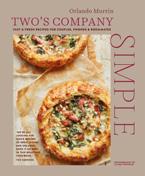


This dish has many variations and can be served like a sandwich with creamy fresh spinach or cheese in the middle, or with roasted peppers or meats on the side for antipasti.
SERVES 4
2 large old potatoes
75g freshly grated
Parmesan cheese
1 egg
25g plain flour
a little milk, for mixing
4 tablespoons olive oil
sea salt and freshly ground
black pepper
fresh flat-leaf parsley, chopped, to garnish
Peel, then grate the potatoes into a bowl. Add the cheese, egg, flour, salt and pepper and enough milk to form a thick batter that is of a dropping consistency. Leave to stand for 15 minutes.
In a large frying pan, heat the oil, then drop in tablespoons of the mixture (you will need to cook the pancakes in batches). Fry for 7 minutes until golden brown on one side, turn and fry the second side until golden. Lower the heat and cook for a further 1–2 minutes. Drain on paper towels. Serve hot, garnished with parsley.

This salad is eaten all over Europe. In my grandmother’s kitchen it was always available as it can be stored in jars and preserved as a salad for your store cupboard.
2 yellow peppers
2 red peppers
3 tablespoons good-quality extra virgin olive oil
1 tablespoon good-quality balsamic vinegar
1 garlic clove, crushed (optional)

sea salt and freshly ground
black pepper
TO SERVE
a few sprigs of fresh oregano
fresh bread
Preheat the oven to 220°C/200°C fan/gas 7.
Put the peppers in a roasting tin and bake in the preheated oven for 25 minutes until blistered and slightly charred. Leave to cool.
When cool, hold the peppers over a bowl, to catch any juices, and peel off the skins. Cut the flesh into thin strips and put in a serving dish. Add the oil, vinegar, garlic, if using, salt and pepper to the bowl of pepper juice and whisk together to make a dressing.
Pour the dressing over the peppers and serve garnished with oregano. Serve with bread to mop up the juices.

Veal is the most commonly consumed meat in Italy, in both the north and the south, and would traditionally be used for this recipe. This version using chicken is such a delightful dish – a Ferrigno family recipe. The smell transports me instantly to Minori.
SERVES 6
60g mozzarella
45g sliced prosciutto
6 whole skinless, boneless chicken breasts, halved and flattened
80ml olive oil
Italian ‘00’ flour, for dredging
250ml dry white wine
250ml chicken brodo
sea salt and freshly ground black pepper
STUFFING
120g minced veal
2 eggs, lightly beaten
1 garlic clove, finely chopped handful of finely chopped fresh flat-leaf parsley
45g freshly grated Parmesan
25g dried breadcrumbs
To make the stuffing, combine the veal, eggs, garlic, parsley, Parmesan and breadcrumbs in a bowl. Add salt and pepper and mix thoroughly.
Cut the mozzarella and prosciutto into 12 equal pieces and set aside.
Arrange the chicken breasts on a large chopping board. Mound equal amounts of the veal mixture onto the centre of each piece of chicken, top with two pieces each of mozzarella and prosciutto. Roll up the chicken, tuck in the ends to enclose the filling and fasten with a toothpick.
Heat the oil in a heavy sauté pan large enough to hold the involtini in one layer over a medium heat. When the oil is hot, lightly dredge the chicken in flour and add half of them to the pan. Brown on all sides, then transfer to a plate. Cook the remaining involtini in the same way.
Pour the white wine into the pan and bring to the boil. Cook the wine at a brisk simmer until it is reduced by half. Return the involtini to the pan and add the broth. Cover and simmer for 30 minutes, then season with salt and pepper.
Transfer the involtini to a serving plate and remove the toothpicks. Spoon over the sauce (it may be reduced if desired).
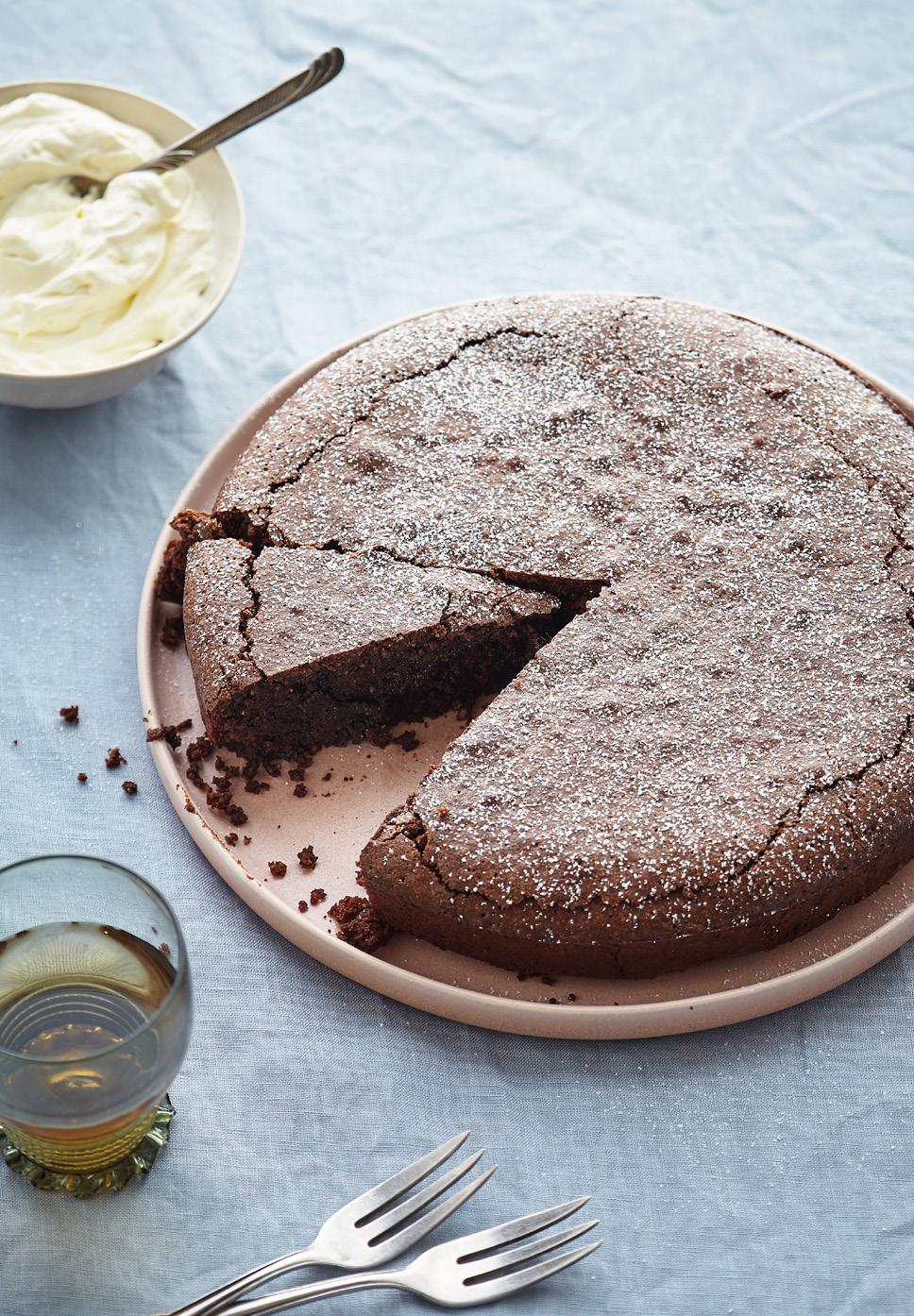
This recipe originates from the beautiful island of Capri. It was originally a mistake by the chef who left out the flour and has subsequently become tremendously famous. As with everything, please use the freshest of ingredients. This cake is always extremely well received on my cooking classes. I truly hope you will enjoy it, too.
200g unsalted butter, plus extra for greasing
250g golden caster sugar
5 large eggs, separated
250g dark chocolate, 70% cocoa solids, melted
250g almonds, toasted until golden brown and finely chopped
grated zest of 1 large unwaxed lemon
sifted icing sugar, for dusting
Preheat the oven to 200°C/180°C fan/gas 6. Grease and line the cake tin with baking paper.
Place the butter in a heatproof bowl set over a saucepan of simmering water. Add the sugar and mix to a creamy consistency. Add the egg yolks, mix together, then add the melted chocolate and almonds.
Whisk the egg whites in a separate bowl until they form soft peaks. Add the grated lemon zest and egg whites to the chocolate mixture and carefully fold in a clockwise direction until completely combined.
Turn the mixture into the prepared cake tin and bake in the preheated oven for 30 minutes. The cake will still have a little wobble when it comes out of the oven.
Cool on a wire rack and dust with icing sugar when cold.
NOTE: I like to serve this cake with either lemon or almond gelato, or just mascarpone, to which a little vanilla and lemon juice have been added.
Recipes taken from Cucina di Amalfi by Ursula Ferrigno, published by Ryland Peters & Small (£20).
Photography by Nassima Rothacker. © Ryland Peters & Small.
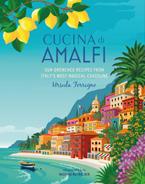
Rosie Reynolds shares some classic recipes and time-saving tips to make your life in the kitchen a lot easier
Fish pie is the epitome of comfort food

The key to getting that ultra-crisp skin is to mix a little bicarbonate of soda with salt


My current favourite apple pie is this pastry-pinwheel-topped creation with cinnamon and brown sugar

t: 01748 822834 m: 07789 996526 e: enquiries@nhflooring.co.uk



Fish pie is the epitome of comfort food. What it lacks in looks, it makes up for in taste and texture. I use a fish pie mix containing salmon, pollock (or cod) and smoked haddock. It’s easy enough to find and the supermarket has very kindly done all the dirty work for you by chopping it up. I don’t bother with a béchamel sauce, opting instead for a mix of double cream and fish stock.
SERVES 4 PREP 10 MINUTES COOK 33 MINUTES

2 tablespoons butter
6 spring onions, chopped
2 x 400g packets fish pie mix
2 teaspoons cornflour
1 tablespoon Dijon mustard
300ml double cream
200ml fish stock
150g cooked prawns
150g frozen peas, defrosted (optional)
bunch of flat-leaf parsley, roughly chopped
800g pre-cooked mashed potato (if mashing your own, you’ll need about 1kg potatoes to yield this amount of mash)
50g Parmesan cheese, grated handful of garlic croutons, bashed to uneven crumbs (optional)
sea salt and freshly ground black pepper
Preheat the oven to 180°C/fan 160°C/gas 4. Put the butter and spring onions in a microwave-safe bowl and microwave for 3 minutes or until soft. Tip out into a 20 x 28cm baking dish.
Toss the fish pie mix with the cornflour and add to the dish with the spring onions. Combine the mustard, cream, fish stock, prawns, peas, most of the parsley and plenty of seasoning, then add the mixture to the pie dish and gently stir everything together to combine.

Spoon the mashed potato on top of the fish mixture and rough up the surface with a fork. Sprinkle over the Parmesan cheese.
Bake for 30 minutes until the pie is hot through and golden on top. Scatter with the crushed garlic croutons, if using, and the remaining parsley.
Serve immediately.
COOK 2 HOURS + 10 MINUTES RESTING
1.5kg pork belly
2½ teaspoons fennel seeds, crushed
1 teaspoon dried chilli flakes
freshly ground black pepper
2 teaspoons fine sea salt
¼ teaspoon bicarbonate of soda FOR THE SWEET-AND-SOUR APPLE PICKLES
3 eating apples, cored and cut into matchsticks
1½ tablespoons cider vinegar
1½ tablespoons honey
sea salt and freshly ground black pepper
MAKE AHEAD This can be made
2 days in advance, stored in the refrigerator, then reheated.
THE SHORTCUT Not preheating the oven saves time, and bicarb is a failsafe trick for achieving perfectly crisp skin without having to hang around the grill to monitor its progress.
Don’t bother trying to score the skin with a knife or a blade from the tool box; stabbing the skin with toothpicks takes 2 minutes versus 15 minutes trying to score through the thick skin with even your sharpest knife. The key to getting that ultracrisp skin is to mix a little bicarbonate of soda with salt and rub it onto the skin before putting the meat into a cold oven. This allows the pork and the oven to warm together which means unctuous fat layers and tender meat.
Make sure the surface of your pork is really dry – leave it uncovered in the refrigerator overnight, or use some paper towels to pat the surface dry if necessary. Use a couple of toothpicks or sharp skewers to prick the skin all over as many times as you can, working left to right, right to left, and up and down until it has been pricked many times – you don’t want to pierce the skin, simply poke the surface. Mix the crushed fennel seeds, chilli flakes and some black pepper with 1 teaspoon of the salt, then rub the mixture all over the meat side of the pork belly. Transfer it to a roasting tray (pan). Mix the bicarbonate of soda with the remaining 1 teaspoon of salt, then rub it all over the skin.
Put the tray into a cold oven and set the heat to 180°C/fan 160°C/gas 4. Roast the pork for 1½ hours, then increase the oven temperature to 220°C/fan 200°C/gas 8 and cook for a further 30 minutes. Remove the pork from the oven, brush off any white sediment that is on the skin and discard. Transfer the pork to a chopping board and allow to rest for 10 minutes. Meanwhile, make the sweet-and-sour apple pickles. Mix the chopped apples with the vinegar and honey, season and set aside until ready to serve.
To carve the pork, flip it over so it is skin-side down on the chopping board. Use a sharp knife to cut through the meat, then apply some pressure and let the knife break through the crackling. Serve immediately with the pickles.

I love apple pie at any time. My current favourite is this pastry-pinwheel-topped creation with cinnamon and brown sugar. So delicious to eat –like your favourite apple pie, made better. Think crisp, buttery, cinnamon sugary palmiers atop a juicy, appley middle, with a hint of cider vinegar to guarantee an intense sweet and tart apple flavour. It’s just so pretty: you will look as though you’ve made masses of effort. Genius!
SERVES 4 PREP 25 MINUTES COOK 40–45 MINUTES CAN BE FROZEN BEFORE COOKING
500g block all-butter shortcrust pastry
5 tablespoons demerara sugar, plus extra for sprinkling
2 teaspoons ground cinnamon, plus an extra pinch
1 egg white, beaten with a fork
6 eating apples, peeled, cored and sliced (I use 3 Granny Smiths and 3 Gala)
3 tablespoons caster sugar
2 tablespoons cornflour
1 tablespoon cider vinegar
whipped cream, to serve
MAKE AHEAD You can prep the pastry a couple of days in advance and chill in the refrigerator.
The pie freezes well, uncooked, for up to 1 month. Defrost before cooking as instructed.
THE SHORTCUT Stunning, flavourinfused pastry with none of the crumbling, kneading, chilling and rolling that’s usually required.
Preheat the oven to 180°C/fan 160°C/gas 4. Line a baking sheet with baking parchment. Divide the pastry in half. Setting one half aside for the pinwheels, roll the other half into a ball, then roll it out to a circle large enough to line a pie dish roughly 22cm wide and 4cm deep. Trim off any excess pastry from around the edges and save it for the pinwheels. Chill the lined pie dish in the refrigerator for 15 minutes. Meanwhile, make the cinnamon sugar pinwheels. Mix the demerara sugar and 2 teaspoons of ground cinnamon in a small bowl and set aside. Roll out the other pastry half and any off-cuts to form a 20 x 15cm rectangle. Brush the surface of the pastry with egg white then sprinkle the cinnamon sugar over the surface of the pastry, then roll up the rectangle into a long, thin sausage shape. Use a sharp knife to cut the pastry sausage into 5mm discs. Lay the discs cut-side up and gently roll them out with a rolling pin, or the side of a clean bottle, to circles about 5cm in diameter. Transfer the pinwheels to the lined baking sheet and chill in the refrigerator for a few minutes.

In a bowl, mix the apples with the remaining pinch of cinnamon, caster sugar, cornflour and cider vinegar, and stir to combine. Pile the apples into the pastry-lined pie dish. Brush the rim of the pastry with a little of the egg white. Lay the pinwheels on top of the apple filling, starting at the outer rim of the pastry and working into the middle. Don’t worry if there are a few gaps, as this will allow steam to escape. Brush the surface of the pinwheels with egg white and sprinkle with the extra demerara sugar.
Bake in the hot oven for 40–45 minutes until golden. Serve warm, with whipped cream.

antel clocks – small clocks designed to sit on a mantelpiece or shelf – started to become popular in the early 1800s. By the end of the century, though, British clockmakers were struggling against a tide of cheap American imports, most of which are of little interest to today’s collectors.
However, good quality mantel clocks by British, French and German makers are still sought after and are currently very affordable, according to Adam Wasdell, expert in charge of the watches, clocks and barometers department at Tennants Auctioneers in Leyburn. “Prices have come down substantially over the last few years,” he says, “so now is an excellent time to buy.”
The key to finding a bargain, Adam advises, is to look out for named pieces, especially ones with unusual features such as complications to the mechanism, additional dials and suchlike.
So what names should we be looking for? When it comes to German makers, both Winterhalder & Hofmeier and Lenzkirch are highly regarded.
Winterhalder & Hofmeier, whose workshops were in the Black Forest and whose movements have ‘W.&H. Sch.’ stamped on their backplates, are amongst the finest clockmakers of the Victorian era. As might be expected from a Black Forest product, Winterhalder & Hofmeier’s movements are usually set in wood cases, a good example being the splendid inlaid rosewood quarter-striking clock shown opposite.
Made in 1900, at the peak of the firm’s success, and sold at Tennants for £220 last autumn, its visual appeal and high standard of workmanship makes it excellent value for money. Unfortunately the upheavals of the First World War and its aftermath fatally compromised Winterhalder & Hofmeier’s finances and the company ceased production in 1933.
Lenzkirch, whose movements are stamped ‘Lenzkirch AUG.’ was another German company that thrived in the latter years of the 19th century. It was founded by Eduard Hauser in 1851 in the village of Lenzkirch, in Baden, and was noted for making good quality mantel clocks, wall clocks and musical boxes.
The Lenzkirch quarter-striking mantel clock is an impressive example, with its burr walnut veneer case and wealth of fine detailing, including exuberant corner finials, pierced sound frets at either side and neat scroll feet.






However, the company’s fine workmanship couldn’t prevent it from, like Winterhalder & Hofmeier, coming to grief between the wars.
Turning to France, an important maker to look out for is Achille Brocot (1817–1878), whose clever innovations include the ‘Brocot suspension’, a mechanism enabling timekeeping to be regulated by altering the length of the pendulum via a key turned in the dial.
In stylistic terms the Brocot clock could hardly be more different to the angular, woodcased German examples. Its ornate ormolu case (ormolu is an alloy of copper, zinc and tin) is decorated with a lion’s head mask and leafy swags, and further embellished with insets of Sèvres-style porcelain.
But what makes this piece especially notable is its ‘year-going’ mechanism, which means it only requires winding once a year. Year-going clocks must be made to very fine tolerances in order to run reliably; only the most skilful makers are capable of constructing them.
As well as being attracted to premium quality workmanship, collectors are also drawn to novelty clocks, such as the English timepiece in the form of a lighthouse. It is signed by Oxford watchmakers Rowell & Harris, and the glass rods in the top move to create the impression of the revolving light in a real lighthouse. This rarity went under the hammer in 2021 for a hefty £2,200.
Another factor affecting the value of a given mantel clock is its colour. Sienna marble, with its rich yellow-orange tones, is used to excellent effect in the Bardel mantel clock. A bronze kneeling figure and acanthus leaf borders provide extra decorative oomph.
By and large colourful clocks are more saleable, explains Adam. Least appealing to modern collectors are the slate and black marble clocks made in large quantities during the gloomy Victorian period following Prince Albert’s death. “There are simply too many of them on the market,” says Adam.
Twentieth century clocks can be collectable too, especially limited edition ones. The JaegerLeCoultre ‘Atmos’ clock, made to celebrate the Swiss brand’s 150th anniversary, fetched an impressive £3,200 at Tennants last summer.
Not only does it look stylish, but an Atmos clock relieves the owner of the tiresome necessity of ever winding it – it is driven entirely by changes in atmospheric pressure. The first clock powered in this way was invented in the early 1600s. The Atmos version was developed in 1928 and adopted by Jaeger-LeCoultre in 1935. Since then many thousands have been produced, but special editions like this one command a premium.
Adam’s final words of advice? “If you decide you want to invest in a clock, don’t hesitate to ask your auction room specialist for advice. And if you ever need to repair your timepiece, The British Horological Institute has a downloadable list of accredited repairers on its website (bhi.co.uk).”
For more information about Tennants Auctioneers, or to arrange a valuation, visit tennants.co.uk or call 01969 623780.
good quality mantel clocks by British, French and German makers are still sought after and are currently very affordable.
• Ornate plaster restoration
• Cornice manufacture
• Traditional lime plastering
• Lime rendering techniques
• Historical plasterwork surveys
• Lath and plaster ceiling repairs
• Heritage work on listed buildings
• Bespoke design service
We have a national reputation for manufacturing and installing the very best heritage, traditional and contemporary plasterwork.


Whether you are looking for a ceiling rose or cornice to t your period property, repairs to damaged existing plaster detail, the large-scale restoration of a historic property or a bespoke design to reinstate traditional decorative plaster features, we can help.



An enamel and gem-set tiger orchid brooch by Tiffany & Co. circa 1890. Sold for £50,000.
t the 1889 Paris Exposition Universelle, New York jewellers Tiffany & Co. exhibited a group of twenty-five exquisite enamelled brooches designed by George Paulding Farnham and modelled as exotic orchids.
Art Nouveau, a brand new artistic style celebrating the sinuous curves of the natural world, was poised to revolutionise the decorative arts. The Tiffany brooches were bang on trend and proved hugely popular. Farnham’s collection won a gold medal and the Paris Herald praised his “boldness and originality of design”.
This miniature masterpiece, its carefully modelled flowerhead studded with rose-cut diamonds and its stem set with emeralds and rubies, has lost none of its appeal today. It sold to a Parisian phone bidder for £50,000 at Ripon auctioneers Elstob & Elstob in 2020.
“It’s a wonderful piece, and in great condition – the colours are so vivid,” says David Elstob. “Not many of these orchid brooches were made, so it’s incredibly rare for them to come up for sale. I doubt if I’ll see another!”

When it comes to auction values, quality and condition count. David Elstob reflects on five lots that really wowed the buyers
“The sports car shown here was a really nice find,” says David. “We were asked to do a probate valuation in Harrogate, and to be honest there wasn’t a great deal of value in the property. But my colleague and I had a lovely surprise when we looked in the garage and found a smart red 1995 Ferrari F355 GTS.”
Ferrari produced the F355 range between 1994 and 1999, and sold just over 2,500 of the GTS model, although it is unlikely that many of them are still such good shape as this particular example.

“The car had obviously been the owner’s pride and joy. It was low mileage, with only just over 40,000 miles on the clock. It had a good service history, only three record keepers, and had been very well looked after. A classic vehicle like this, in such good condition, was bound to attract a lot of interest, and we sold it last autumn for £61,000.”
A Lalique ‘Bacchantes’ vase, designed in 1927 and engraved ‘R.Lalique France’. Sold for £20,000.

Founded in 1888, the firm of Lalique still produces fine glassware today, but it is the pieces made during the lifetime of René Lalique himself that attract most interest amongst collectors. Pieces marked ‘R Lalique’, like the one illustrated here, were produced up until 1945 when Lalique died; thereafter the ‘R’ was dropped.
The Lalique ‘Bacchantes’ vase went under the hammer at Elstob & Elstob for an eyewatering £20,000 in 2020 – well in excess of its ‘come and buy me’ estimate. Why did it perform so well?
“For one thing it’s a rare pattern,” says David, “and especially rare in this size, which is getting on for 25cm high. It has particularly good opalescence, and considering its age it’s in very nice condition. Glassware often falls victim to chips and bumps, especially any design elements protruding from the surface, but this piece has survived remarkably well.”


Sold for £23,000.
At £23,000 for the pair, the padouk chairs shown here are an expensive way to take the weight off your feet, but they nonetheless excited a lot of interest when they were sold at Elstob & Elstob in 2019.
“Chairs made in China to English designs are very rare,” says David, “so these two, which came out of a country house in Lancashire, were a good find – and a surprise to the seller, who had no idea what they were.”
Padouk is an African and Asian hardwood valued for its toughness, stability and decorative quality – it has a unique reddishorange colour that darkens with time – and it is an important timber in traditional Chinese furniture-making. In this case it has been used to recreate a design by Giles Grendey, one of the best-known cabinetmakers of his era, complete with cabriole legs, carved shells and ball-and-claw feet.
“Works of art featuring horses or dogs are always strong sellers in this part of the world,” says David. “Last autumn, for example, we sold a very fine bronze by Yorkshire sculptor Sally Arnup for £10,000.

“Sally, who died in 2015, worked from a studio in Holtby, near York, and specialised in animal subjects. You can see several examples of her work in York Art Gallery.
“This piece, which stands over a metre high, plinth not included, is notable for being one of her larger works. Even though it is marked as number four out of an edition of five, it appears that only three were actually made.”
The studio that Sally shared with her husband Mick is now home to a group of six artists, including their daughter Hannah. For more information about auctions at Elstob & Elstob visit elstobandelstob.co.uk or call 01765 699200.














“With its white sandy beaches and clear blue waters, the Maldives really is a little piece of paradise,” says Bev Boulton of local independent travel agents Spear Travels. “People used to think of it as a honeymoon destination, but nowadays there’s something for everyone –including families.”



The Maldives is a collection of more than a thousand coral islands, grouped into 26 ringshaped atolls and set in the balmy waters of the Indian Ocean southwest of Sri Lanka. The earliest settlers arrived there from Gujarat 2,500 years ago; nowadays their descendants welcome visitors from around the globe.
What makes the Maldives unique as a holiday destination is that virtually all of its resorts are situated on their own private island, and each has its own unique combination of facilities and features. Some are perfect for simply chilling out: small and secluded enough that you can stroll round the island and barely meet a soul. Others offer a wide range of activities and experiences for holidaymakers who like to be up-and-doing.
“A holiday in the Maldives can be as busy or as laid-back as you like,” says Bev. “Some islands are focused on peace and relaxation, some have very good spas, golf driving ranges, waterslides or underwater restaurants. And if you’re interested in marine life, the Maldives really should be on your ‘bucket list’; snorkelling is a big draw for many people, and it’s an ideal place to take a PADI scuba diver training course.
“The Maldives has a tropical climate, so temperatures are high all year round, but in general the best time to visit is between November and April – that way you’ll avoid the rainy season. As it’s a fairly long flight – eleven hours plus – it’s a destination that warrants a longer stay. Although many visitors stick to one island, a popular option is to plan a two-centre stay, perhaps combining a beach villa with a water villa to create a more varied experience.”
Spear Travels offices include Northallerton, Skipton and Boroughbridge. For contact details visit speartravels.net
THE TRAVEL LOUNGE IS RENOWNED FOR ITS EXCELLENT SERVICE AND COMPETITIVE PRICES.
Our friendly expert team is second to none and uses their extensive knowledge to create the perfect holiday, just for you.
Our in-depth experience and proven high levels of service are supported by the financial security of being fully ABTA-bonded.

The Travel Lounge, “is that there’s no time difference between here and there. You can visit an exciting and exotic destination without having to spend the first few days of your trip feeling jet-lagged!”
And there are certainly plenty of thrilling experiences to be had when you arrive. Taking a safari in the Kruger Park – one of the few places in Africa where you can see the ‘big five’ animals (lion, leopard, black rhinoceros, African bush elephant and African buffalo) – will be top of the agenda for many visitors.
But there’s much more to South Africa than safaris. A popular way to experience some of the highlights of this rich and varied country is to take a trip along The Garden Route, 200 miles or so of lush coastline extending between Port Elizabeth in the east and Cape Town in the west.
Spectacular scenery and a wealth of colourful wildlife aren’t the only attractions along the way.

Stellenbosch, South Africa’s second oldest town, is at the heart of the Cape Winelands: the ideal place from which to explore some of the world’s best vineyards and refine your palate at a wine-tasting.

“Cape Town itself is the jewel in the crown,” says Linda, “and the place where people normally end their trip. Its attractions include the iconic Table Mountain, the bustling V&A Waterfront and the Kirstenbosch garden, one of the finest botanical gardens in the world.”

But of course you don’t have to be on the go all the time. With nearly 2,000 miles of coastline fronting two oceans, South Africa has no shortage of beaches to relax on. Some of the best, such as Camps Bay, are just a stone’s throw from the centre of Cape Town.
And the best time to visit?
“Between May and September,” says Linda. “It’s cooler, and conditions are especially good for viewing big game.”
The Travel Lounge is at 11 Market Place, Bedale. Call them on 01677 427358 or email sales@thetravellounge.co.uk
“One of the great things about holidaying in South Africa,” explains Linda Maughan of Bedale-based travel experts






• CRANIOSACRAL THERAPY
• PSYCHOTHERAPY
• HYPNOTHERAPY
• EMOTIONAL FREEDOM TECHNIQUE (EFT)
• COUNSELLING
• TRANSFORMATION COACHING
• MINDFULNESS
• CHILD & TEEN THERAPY
• DRUMMING
To book please go to our website or call 07887 506163 to discuss a treatment suitable for you. Visit www.tanfieldwellness.co.uk for further details.


UNIQUE LUXURY LODGES AND COTTAGES IN RURAL NORTH YORKSHIRE


• Exclusive cluster of luxury lodges with stunning views.
• Each boasts style and comfort with hot tubs and private gardens.
• Idyllic base to explore the glorious Dales.
• A paradise for racing enthusiasts, set in 50 acres of Sun Hill Farm Estate.
sunhill-lodges.co.uk
• Choice of 1, 2 and 3 bedroom lodges, stone farmhouse, or cottages.

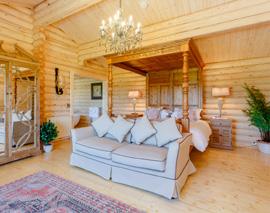



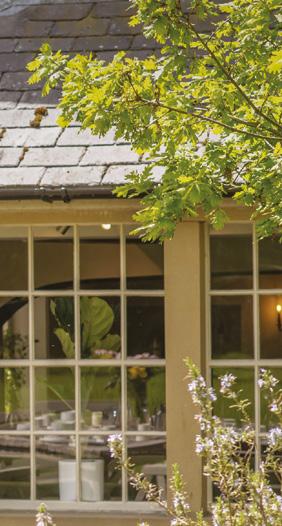





Masham, Ripon, HG4 4JH 01765 680900 swintonestate.com
18 & 19 March
This Mother’s Day let those important women in our lives enjoy a traditional afternoon tea served in the beautiful Drawing Room or Samuel’s Restaurant at Swinton Park, where beautiful Georgian windows allow the sunlight of spring to flood in. Includes a special gift for mum.
5 April, 12 April & 21 May
Two sessions run each day: 10am until 12:30pm & 1:30pm until 4pm.
Suitable for ages 6-12 years. £15 per child per session with prebooking required as space is limited.
The Woodland School at Swinton Bivouac, run by Lea Eyre, is all about exploring the great outdoors and learning about it through play and exciting activities in the Druid’s Plantation. Parents are welcome to relax in the Café Bistro throughout the session.
Easter Sunday Lunch at Samuel’s Restaurant
9 April
Gather the family for a traditional Easter Sunday lunch in Samuel’s Restaurant. Enjoy a three-course lunch whilst overlooking the parkland springing to life. After lunch, take a stroll around the 200-acre parkland and gardens, complimentary access for our Sunday Lunch guests.
13 April & 11 May
A hands-on full-day of arts and crafts in our new peaceful Spa Gardens nestled within the walled garden at Swinton Park. Includes a two-course meal in The Terrace Restaurant. Painting with Pastels: Our feathered friends on 13 April. Learn how to create wildlife and bird paintings with texture, colour and softness looking at composition, drawing and methods for creating paintings of birds that show their feathers with depth of colour and texture.
Skills for Summer Watercolour Sketching on 11 May. Perfect sketching on the move by learning some useful methods before venturing out and about into the beautiful parkland and gardens to sketch.
19 April, 3 May, 17 May & 31 May
New for 2023, Cook’s Creations is a fabulous, sociable course for you to enjoy early evening –perhaps after work, as a catch up with friends and family or simply a unique way to end your day! Spend a wonderful evening in the company of Chef Tutor Luke at Swinton Cookery School.
Learn how to prepare and cook a delectable 3-course meal with the guidance of Luke, then sit down and enjoy the fruits of your labour with a glass of wine in accompaniment. Each course will have its own unique fine dining menu which reflects the seasonal flavours of the Swinton Estate.
9 May, 16 May & 6 June
Celebrated gardener Dame Susan Cunliffe-Lister gives an insight into her gardening style over a coffee, with a guided tour around Swinton Park’s gardens and a two-course lunch.
The lunches will include several ingredients from the garden, Susan will explain her choice of produce, with tips for cultivation and harvesting. Garden Lunches are held on several dates throughout the year.
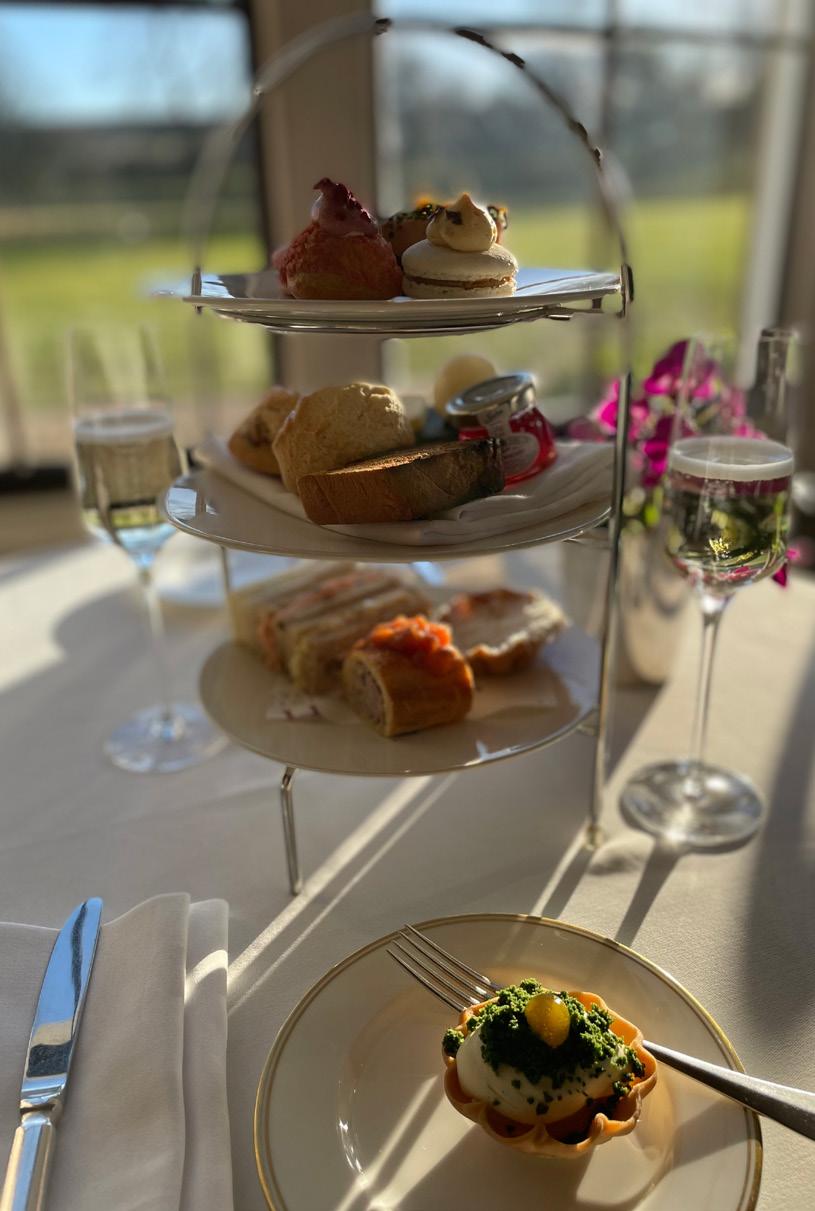
Trinity Church Square, Richmond, DL10 4QN 01748 826561 greenhowards.org.uk
Monday to Saturday 10am to 4.30pm
Free Exhibition: King and Country
Until Wednesday 10 May
In this coronation year we examine the regiment’s royal connections, marking the many ways in which the army and its sovereign are intertwined. This free exhibition is on display in the museum’s reception area.

Richmond Wander
5, 6, 12, 13 April & 3, 4, 10, 11 May, 2pm
Take a walk round Richmond with your knowledgeable guide, enjoying the scenery but also spotting the clues to its military past. Planes, prisoners, boats, boots, bridges, nurses, Normans, Belgians, castles and trains all feature! If you’re new to Richmond, a wander with us is a must. Even if you’ve been many times before, you’re sure to learn something new about this fascinating town. Wanders last just over an hour. £3. Booking advised. Call 01748 826561.
From 21 April
Exploring a rich real-life history of daring feats, escape and evasion, the kindness of strangers, personal sacrifice, split-second decision making, fighting retreats and real-life survival by the skin of your teeth. You needn’t make it up. Admission to Great Escapes is included in museum entry, £7, under 10s free.
Museum Talk: Wounds, weddings and watchmaking. What went on at Murren?
Thursday 1 June, 7pm
Revealing the stories of the men sent from Prisoner of War camps in Germany to an internment camp in Switzerland during the First World War. These wounded soldiers became part of an incredible community, helping them prepare for a changed life in a post-war civilian world. £5. Booking essential. Call 01748 826561.
Newsteads, High Street, Leyburn, DL8 5AQ 01969 368006 07730 565036
rosemaryandtwine.co.uk
Monday 20 March
Make your own colourful spring Easter wreath with fresh flowers and foliage. All materials and refreshments included.
The Old School House, Leyburn Arts and Craft Centre. £40pp.







Bedale, DL8 2PS 01677 425323 thorpperrow.com
6 April, 2pm–5pm
As the days get warmer and the Arboretum bursts into colour from the thousands of daffodils that come into bloom, embrace the arrival of spring with this lively and informative tour, followed by afternoon tea.
Join Faith Douglas, Curator, as she shares her passion for the season on a walk-andtalk around the Arboretum. Faith will show you the best of the daffodil collection and share some fascinating facts and care tips along the way.

Afterwards, you will enjoy a traditional afternoon tea and a glass of champagne, all served in Thorp Perrow’s Summerhouse overlooking the beautiful grounds. £60.
10 May, 2pm–5pm
As the days get warmer and the Arboretum bursts into colour from the thousands of flowers that come into bloom, embrace the arrival of spring with the third in our series of lively and informative talks.
Join Faith Douglas, Curator, as she shares her passion for the season on a walk-and-talk around the Arboretum.
Faith will show you the best of the blossom and bluebell collection and share some fascinating facts and care tips along the way. Afterwards, you will enjoy a traditional afternoon tea with a glass of champagne, all served in the Summerhouse overlooking the glorious spring grounds.
All attendees will be given a spring flower posy to display in their home.




Church Bank, Aysgarth, DL8 3SR 01969 662829 yoremillcraftshopandgallery.co.uk
8 April
Use a variety of mixed media techniques to create an experimental sketchbook. Mixed media mark making collage, collecting found materials to work into a journal of the day.
A very free explorative experience of mindfulness and calm in the countryside.
The full day with lunch is £60 per person.
22 April
Workshop suitable for all abilities. Full tuition given by Suzie Wright, a local ceramicist. With all materials and firing of your work included.
The full day with lunch is £85 per person.
13 May
Explore the wonderful local environment around Aysgarth Falls using a variety of media to draw and paint from nature.
Working from collected images, own sourced images using cameras or phones in the local area, you will develop responses to the local landscape in a sketchbook using dry media to record shape and colour composition then come into the studio to work the designs up using acrylic paint.

You will learn to use a limited palette to build up a range of colours that harmonise and develop painting confidence and colour mixing.
The full day with lunch is £60 per person. Check our website for further details and how to book a place on our courses.
Find out how we brew the Black Sheep way and sample our extensive range of beers, cider & spirits straight from the source. We’ve got great food, our shop is stocked with top quality merch and lots more beer to take away.





For tour times and table bookings, visit our website: blacksheepbrewery.com/visit-us

01765 680101 visitor.centre@blacksheep.co.uk @BlackSheepBrewery @BlackSheepBeer



Near Scorton, Richmond, DL10 6AT 01748 818178 kiplinhall.co.uk
Open 6 days a week (closed on Thursdays)
31 March–19 April, 10am–5pm Standard admission applies.
Discover buckets of fun activities hiding in the grounds of Kiplin this spring. Play games, explore trails, learn, and laugh as a family in the fresh air.
6 April, 10am–2pm
£35, booking required.
Discover the wild food waiting to be found during a 4-hour workshop, including all-important identification guidance. Explore while walking the Kiplin estate to find and taste wild ingredients with a foraging expert.

22 April, 10am–4pm
A live demonstration of chainsaw carving from The Yorkshire Carver, Shane Green. Part of our The Wild Escape Sculpture Trail, highlighting biodiversity at Kiplin. (The Wild Escape is made possible by lead support from Arts Council England’s National Lottery Project Grants, with additional support from Art Fund.)
ysgd.co.uk

This three-day introductory course is a fun, inspirational and highly informative way to dip your toe into the enlightening world of planting design. You’ll learn about the mechanics and the artistry behind some of the world’s most stunning plant compositions, have a go at designing a planting scheme yourself and leave with a whole new palette of species to experiment with. The course runs over three consecutive days during the verdant and colourful month of May. During the course students will be given exercises to complete, culminating on the final day in their own planting design for a border.
The course is delivered by Alistair Baldwin with support from Ben Preston in the beautiful setting of Harewood House. It will include time in the iconic York Gate Garden in north Leeds, some 15 minutes from Harewood. £450 + VAT.
Silver Sale
29 March
Viewing
28 March 10am-4pm
Antiques to include the residual contents of Lartington Hall
5 April Viewing
4 April 10am-4pm
Jewellery & Watches
26 April Viewing
25 April 10am-4pm
Please bring your items to our Ripon Saleroom for a free auction estimate. You do not need an appointment; our specialists are available daily to provide any information or advice you need. Confidential appraisal visits by one of our valuers can be arranged. Please contact us to discuss your requirements and arrange a visit.
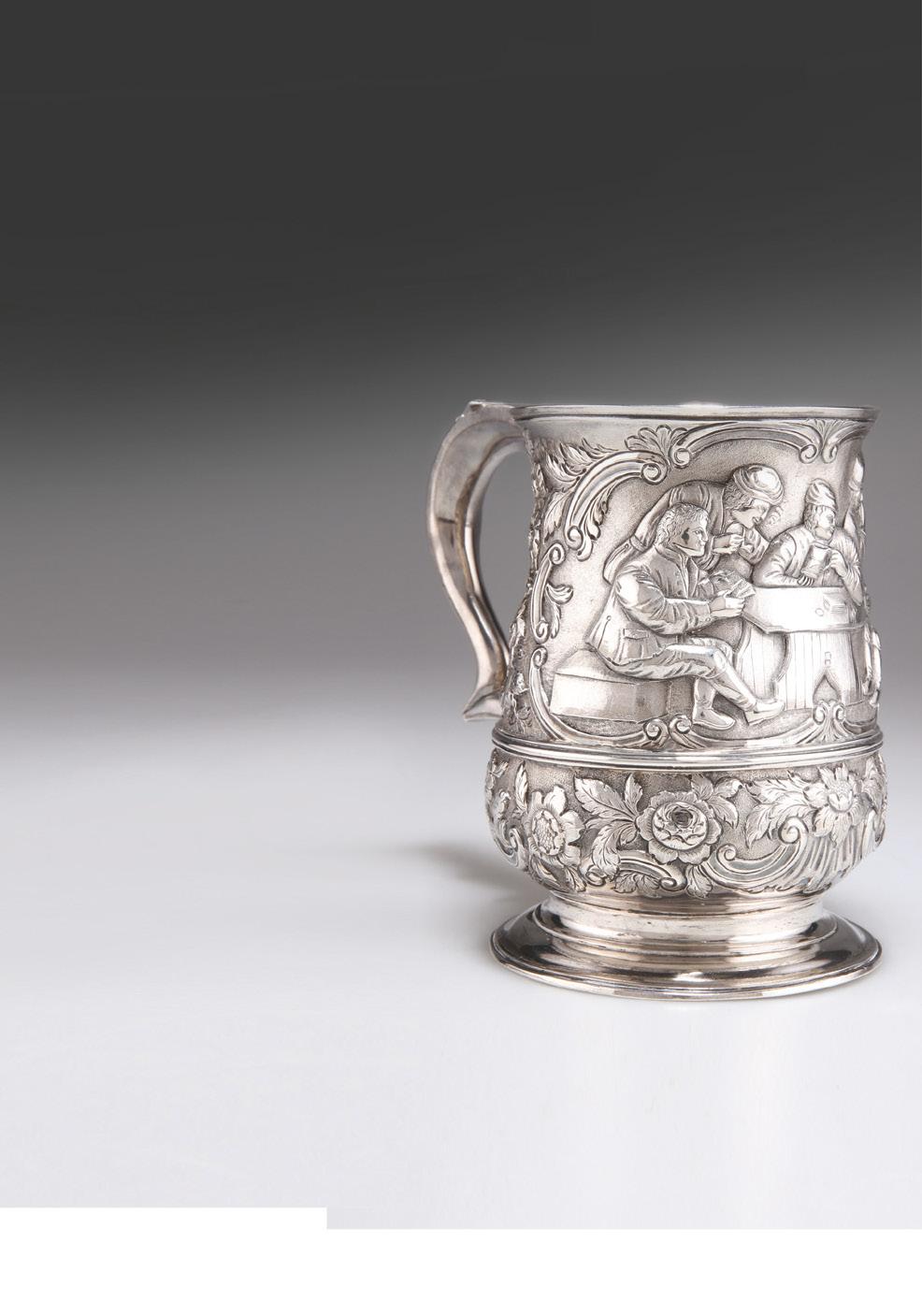
t: 01765 699200 e: info@elstob.co.uk
w: www.elstob.co.uk
The Hutts, Grewelthorpe, Ripon, HG4 3DA himalayangarden.com
Monday 10 April
Rumours are circulating that a dragon has hidden its eggs somewhere in the Himalayan Garden. Join storyteller Dragonella to look for hidden signs of magic as you adventure through the garden on a quest to find the eggs and keep them safe. Booking essential, see website for details.*
Tuesday 25–Thursday 27 April
Join award-winning illustrator Bridget Gillespie on this 3-day Botanical Illustration workshop. You will get individual tuition covering drawing, composition and watercolour techniques. Topics will include observation, drawing, creating form and mixing watercolours, all inspired from walking around the beautiful Himalayan Garden. Suitable for complete beginners to intermediate painters. Materials are not included. £200 per person, see website for details.
Wednesday 24 May
The garden is famous for its extensive and beautiful national collection of rhododendrons. Come and enjoy a tour, talk and afternoon tea and get top tips on how to care for rhododendrons and the secrets behind the success and challenges of growing them here. Bring a soil sample from your garden and we will test it for its suitability for growing rhododendrons. £30 per person, see website for details.

Wednesday 31 May*
Once, whilst in the Peruvian Jungle, Dragonella got distracted by sparkling bright colours in the trees, and now she’s spotted them here! Follow her through the garden and keep your eyes peeled as she tells tales of adventure and unexpected meetings with magical creatures. Booking essential, see website for details.*
*Dragonella 1-hour interactive tours for 4–10-year-olds at 10.30am, 12 noon & 2pm. Tour £10 per child, includes entry (normal entry applies for adults, children must be accompanied by an adult). Limited places available. Booking essential – see website for details.
Explore the culinary world at the Swinton Cookery School on the Swinton Estate. Whether you’re new to the kitchen, honing your skills, or wanting to learn new cuisines and techniques we have a course to suit you.

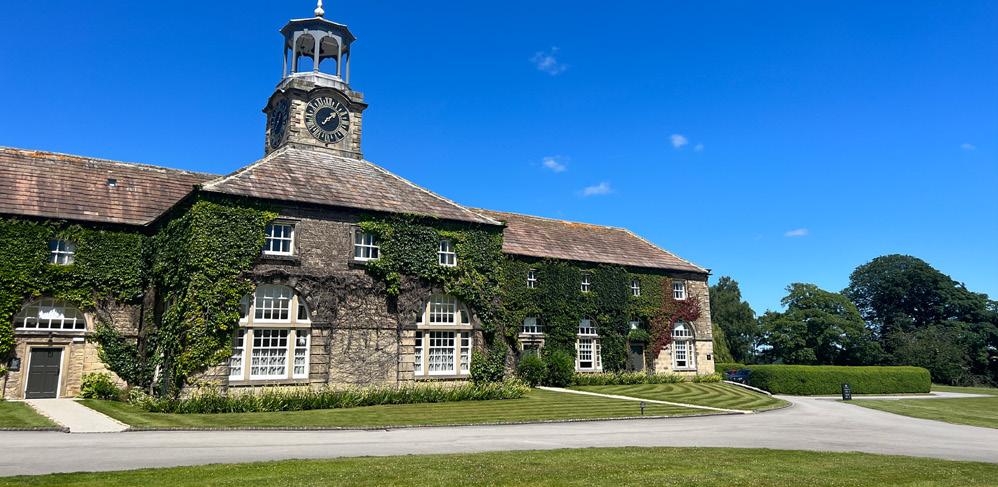
Courses are available for all abilities and ages (we offer children’s cookery courses for children aged 6 to 17) and cover an array of international cuisines, from our Indian Masterclass and Mexican Cuisine; to our Michelin Secrets, Sushi Making, Cooking with Fire, Artisan Breadmaking and Quick & Simple Suppers. New for 2023: Free From and Plant Based cookery courses.
You’ll leave us happy and fully equipped with recipes, knowledge and a Swinton Cookery School apron.
View the full list of cookery courses at swintonestate.com/cookeryschool

Various evenings throughout the year at Swinton Cookery School
New for 2023, Cook’s Creations is a fabulous, sociable course for you to enjoy early evening - perhaps after work, as a catch up with friends and family or simply a unique way to end your day!
Spend a wonderful evening in the company of Chef Tutor Luke at Swinton Cookery School. Learn how to prepare and cook a delectable 3-course meal then sit down and enjoy the fruits of your labour with a glass of wine!






Michael McGarry began legal practice in Hawes in 1997 and established McGarry & Co Solicitors in Barnard Castle in 2011. The business expanded rapidly, and now has additional offices in Hawes, Leyburn, Skipton, Sedbergh and Darlington.

Life is unpredictable, and there are many reasons why a person might become unable to manage their own affairs. Some conditions, such as dementia, are gradual in onset and may be irreversible. Other changes or illnesses can be sudden but temporary, such as an accident or a mild stroke.
Regardless of the cause and the likely outlook, if a person lacks the mental capacity to take important decisions then, unless arrangements have been made in advance, nobody has the automatic right to take charge of their affairs, explains Michael.
“Contrary to what people often assume, being married or in a relationship or having children doesn’t entitle anyone to act on your behalf. This can put relatives in a difficult position. Utility bills or local authority care home fees may fall due; pensions or other benefits may need to be collected; businesses or investments might urgently need to be managed, or property sold.
“If no prior arrangements are in place, your relatives’ only options are to struggle along as best they can or to apply to the Court of Protection for a Deputy to be appointed to make decisions on your behalf. This is a slow and costly process – you can be waiting for up to a year – and it could even result in a family dispute if your relatives can’t agree who the deputy should be.
“As well as decisions about your property and financial affairs, there may well be crucial decisions to be made about your health and welfare. What kind of medical treatment should you receive? Where should you live? In the event that you need to go into a nursing or care home, which one should it be?”
Fortunately, there’s a way of forestalling these problems, namely to set up a Lasting Power of Attorney (LPA).
“An LPA involves appointing one or more individuals that you trust to act as attorneys to look after your affairs if you lose the mental capacity to do so yourself. When dealing with finances, there is also an option for the LPA to come into effect straight away. It’s important to think ahead, because once you lose capacity it’s too late to set up an LPA – it needs to be done in advance. Of course, it may never be needed, but like insurance it’s definitely worth having in place just in case.
“There are two kinds of LPA. A Property and Financial Affairs LPA gives your attorney the power to make decisions about your money and property, and a Health and Welfare LPA enables your attorney to make decisions about issues such as how and where you live and what kind of medical care you receive. Most people get both LPAs done together, often at the same time that they are making their wills.”
“The attorney could be a relative, a friend or solicitor. You can appoint different attorneys for each type of LPA, and you can also appoint a succession of attorneys. For example, you might appoint your wife as attorney, and one of your children to be attorney in the event that your spouse predeceases you or no longer has the capacity to act as attorney when required.”
“It’s possible to apply for an LPA online, but if you talk to a solicitor, we can give you a full explanation of how LPAs operate and how to avoid the pitfalls. For example, we can help you fine tune the circumstances in which the LPA can be applied, and what exactly your attorney should or shouldn’t do. We can also help to ensure your interests are protected, for example by building in provisions that reduce the opportunities for anyone to commit fraud or exert undue influence.
“Arranging a single LPA is likely to cost around £400 plus VAT, and arranging two – a Property and Financial Affairs LPA and a Health and Welfare LPA – will be around £600 plus VAT. In addition to this the Office of the Public Guardian will charge £82 per LPA registered. It’s not cheap, but then the consequences of not having an LPA in place could prove very costly in the long run.
“Drawing up an LPA with your solicitor is relatively quick and easy, but at the moment it’s taking around five months for the Office of the Public Guardian to register LPAs, so if you’re thinking of doing it then it’s definitely better to take action sooner rather than later.”
For branch details, contact numbers and more information about McGarry & Co Solicitors visit mbmcgarry.co.uk

“it may never be needed, but like insurance it’s definitely worth having in place just in case.”





THE OLD VICARAGE, HORNBY
Substantial five bedroom country residence, stabling and outbuildings with 7 acres of grassland.
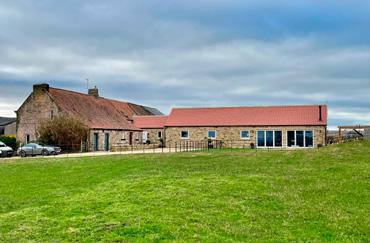

Guide Price: £900,000
Robin Jessop Ltd. 01677 425950 robinjessop.co.uk
TUMBLEDOWN, WENSLEY
Substantial detached four bedroom house with garage and parking. Beautiful landscaped gardens.
Guide Price: £875,000
Robin Jessop Ltd. 01969 622800 robinjessop.co.uk
Stunning three bedroom family home with open plan living/ dining accommodation together with 4 acres of land approx.
Guide Price Range: £600,000 - £650,000
Robin Jessop Ltd. 01969 622800 robinjessop.co.uk
Attractive double fronted two bedroom cottage with garage and large garden.
Guide Price: £385,000
Robin Jessop Ltd. 01969 622800 robinjessop.co.uk
Attractive two bedroom character cottage with o -road parking and extensive gardens.
Guide Price: £250,000
Robin Jessop Ltd. 01677 425950 robinjessop.co.uk
BRAMBLE BARN, HORNBY
An immaculate two bedroom cottage in a sought after rural location.


Guide Price: £325,000
Robin Jessop Ltd. 01677 425950 robinjessop.co.uk


Bear Cottage, Hawes
Black Sheep Brewery, Masham
Booths, Ripon
Campbell’s of Leyburn

The Cheese Press, Richmond
The Co-op, Masham
Dovetail Interiors, Bedale
Fairhursts, Swinithwaite
The Fleece, Richmond
The Green Howards Museum, Richmond
Lewis and Cooper, Northallerton
Mainsgill Farm Shop, Richmond
Milners of Leyburn
Ripon Walled Garden
The Station, Richmond
Stoneygate Farm Shop, Richmond
Tennants of Leyburn
Thorp Perrow Arboretum, Bedale

The Travel Lounge, Bedale
Wonky Tree Bookshop, Leyburn



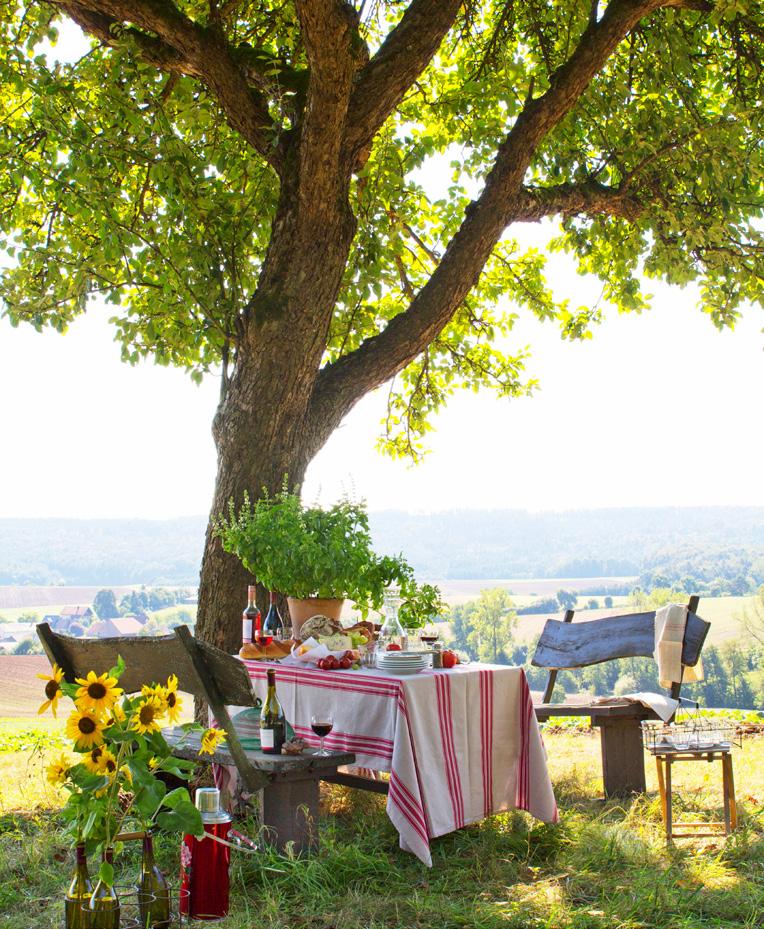







We pride our selves in creating a home from home, in a welcoming atmosphere. Our Residents enjoy savouring our fabulous restaurant quality meals and af ternoon teas as well as enjoying daily activities. All our homes have an excellent reputation in the local community. A Home for life.



Masham
The White Bear’s talented chefs use locally sourced ingredients to create delicious seasonal dishes, and there’s an extensive wine list to complement the menu. You can enjoy your meal in the charming dining room or the traditional bar, with open fires creating a cosy atmosphere throughout.

whitebearmasham.co.uk 01765 689319
Richmond
Situated just off the market square next to the Georgian Theatre, The Fleece is open to all for coffee & cakes from 11am. Lunch, dinner, drinks & cocktails are on offer in the stylish bar and restaurant.

There are 13 ensuite bedrooms, many dog friendly. thefleeceyorkshire.co.uk 01748 503104
Masham
Tour the brewery, dine in the Bistro, and taste

The Black Sheep’s award-winning beers at the ‘Baa...r’. You can also buy lots of goodies from the well-stocked Sheepy Shop.
A ‘ewe-nique’ venue for corporate entertaining, product launches, parties and weddings!
blacksheepbrewery.com 01765 680101
Sedbusk
This beautiful country house hotel near Hawes serves delicious classic dishes using locally sourced ingredients. Visitors are welcomed daily for a sumptuous evening meal in its intimate restaurant or for a light lunch, afternoon tea, or coffee and cake in its comfortable Oak Room. stonehousehotel.co.uk 01969 667571
The Garden Rooms Bistro offers exceptional food in a unique setting. The passionate kitchen brigade pride themselves on delivering beautifully crafted dishes using the best Yorkshire produce; each highly seasonal menu offers an affordable choice of classic and modern British food delivered with outstanding service in a comfortable and relaxed environment
tennantsgardenrooms.com 01969 621146
Grand honest food cooked to perfection, all locally sourced and freshly prepared. Situated on the Tupgill Park Estate near Middleham in the heart of the Dales.



The Saddle Room also has nine bed and breakfast units, seven cottages and a wedding venue that will seat 120 people.
thesaddleroom.co.uk 01969 640596
From the award-winning, fine-dining experience in the grandeur of Samuel’s Restaurant to the more relaxed AA Rosette Terrace Restaurant and Bar, serving morning coffee, lunch, dinner and fabulous cocktails. Both restaurants showcase local and seasonal produce with much from the estate and four-acre walled garden.
swintonestate.com 01765 680900
Sample award-winning chef Jonathan Harrison’s unique take on modern British cooking in The Sandpiper’s 40-seater restaurant or the cosy traditional bar serving local ales, fine wines and an extensive range of whiskies. There are two tasteful boutique-style en-suite doubles for overnight guests.
sandpiperinn.co.uk 01969 622206




